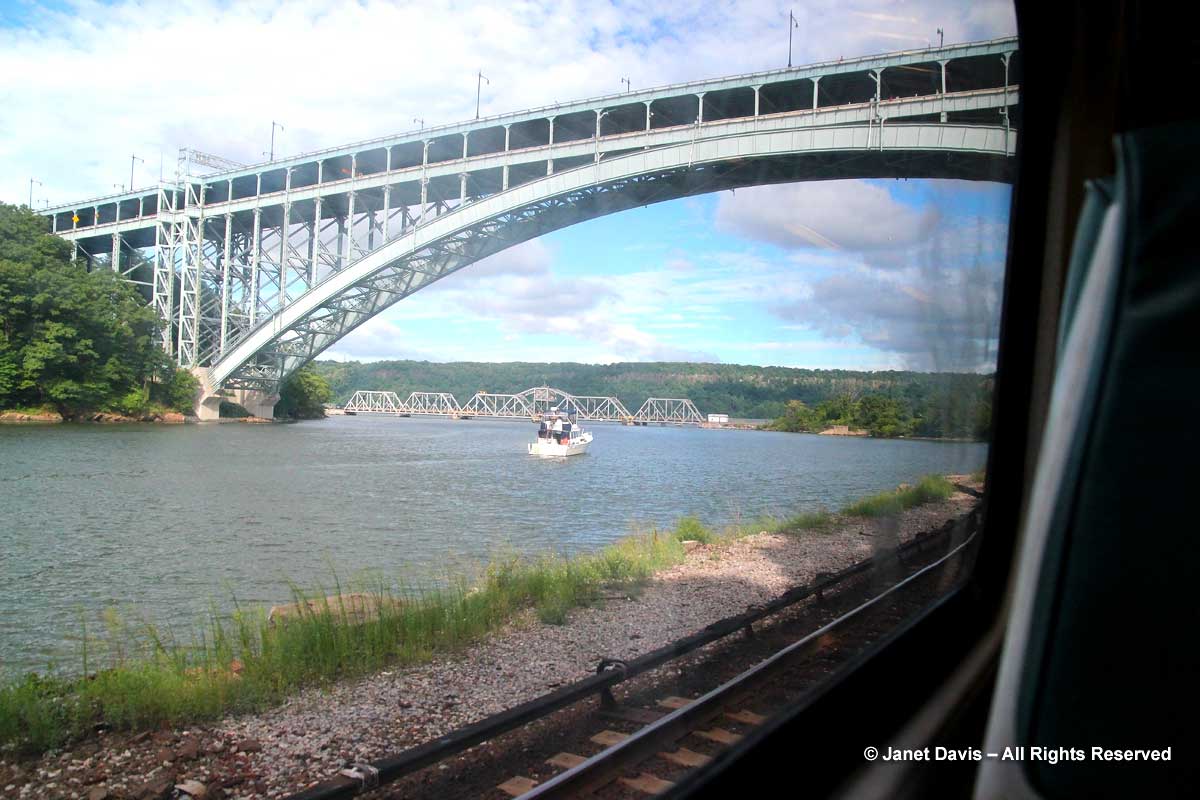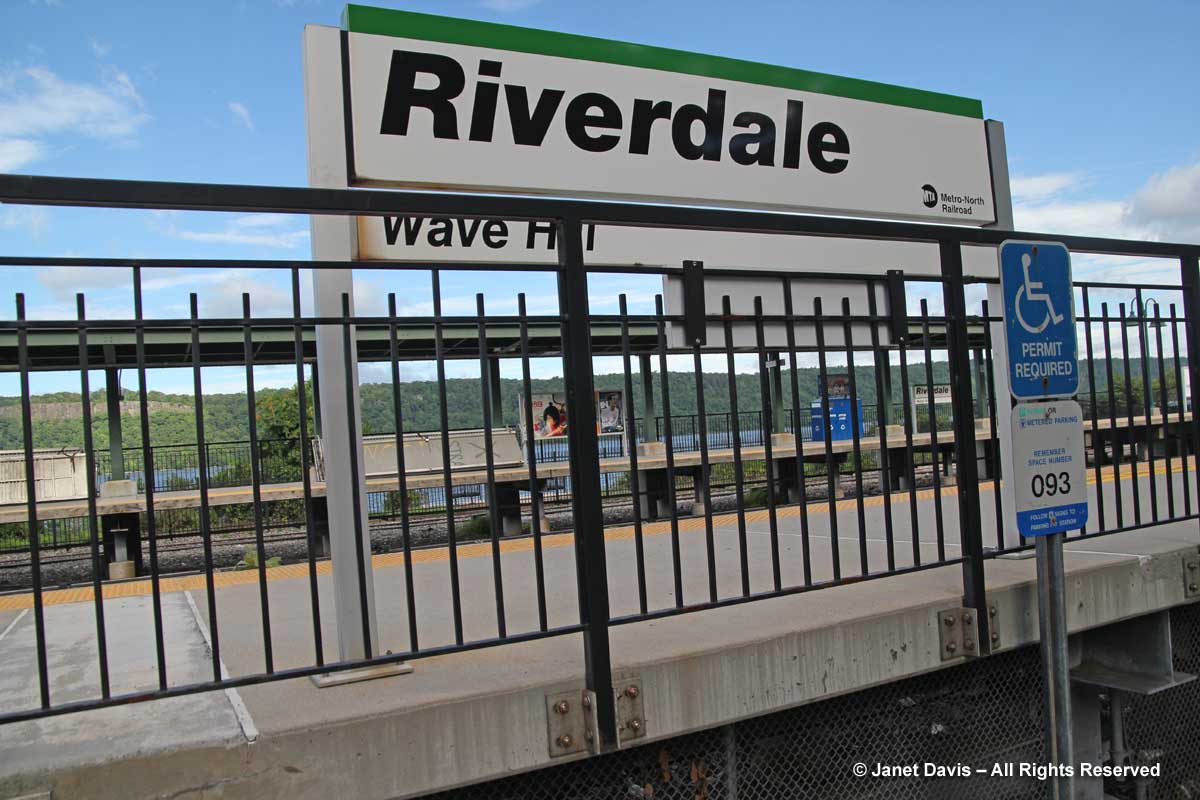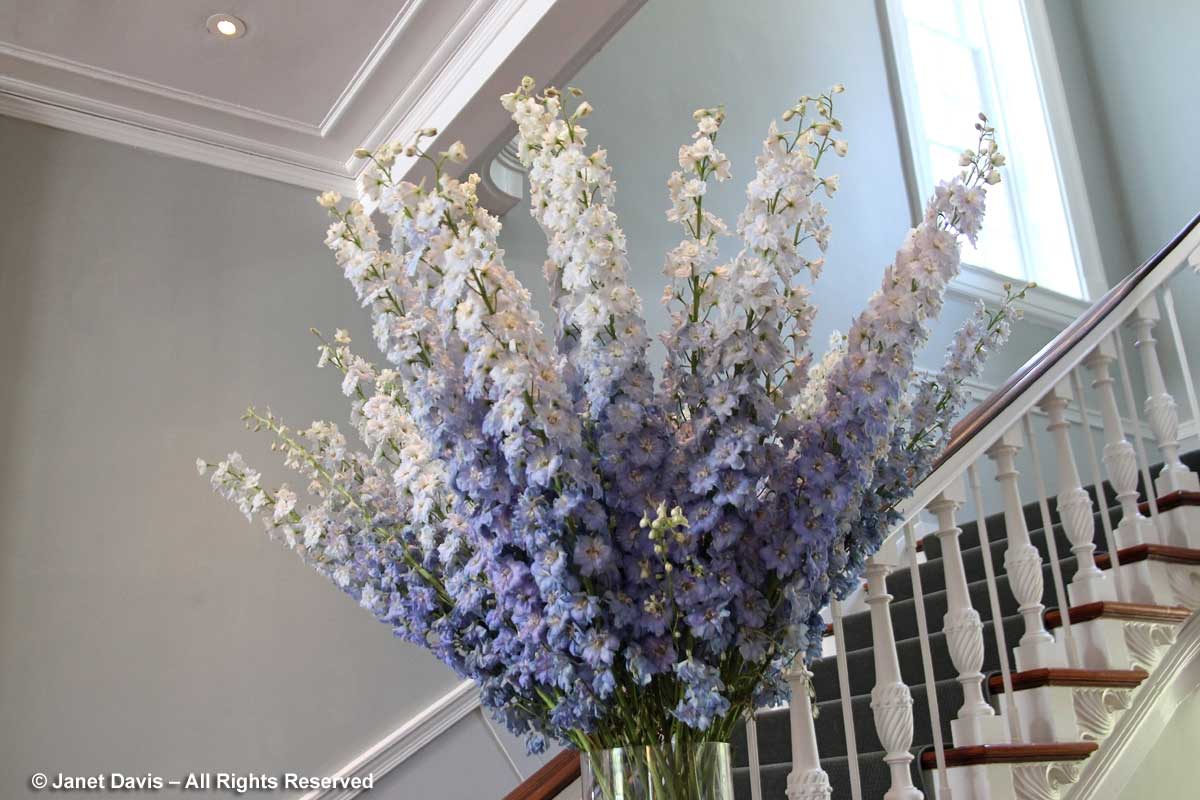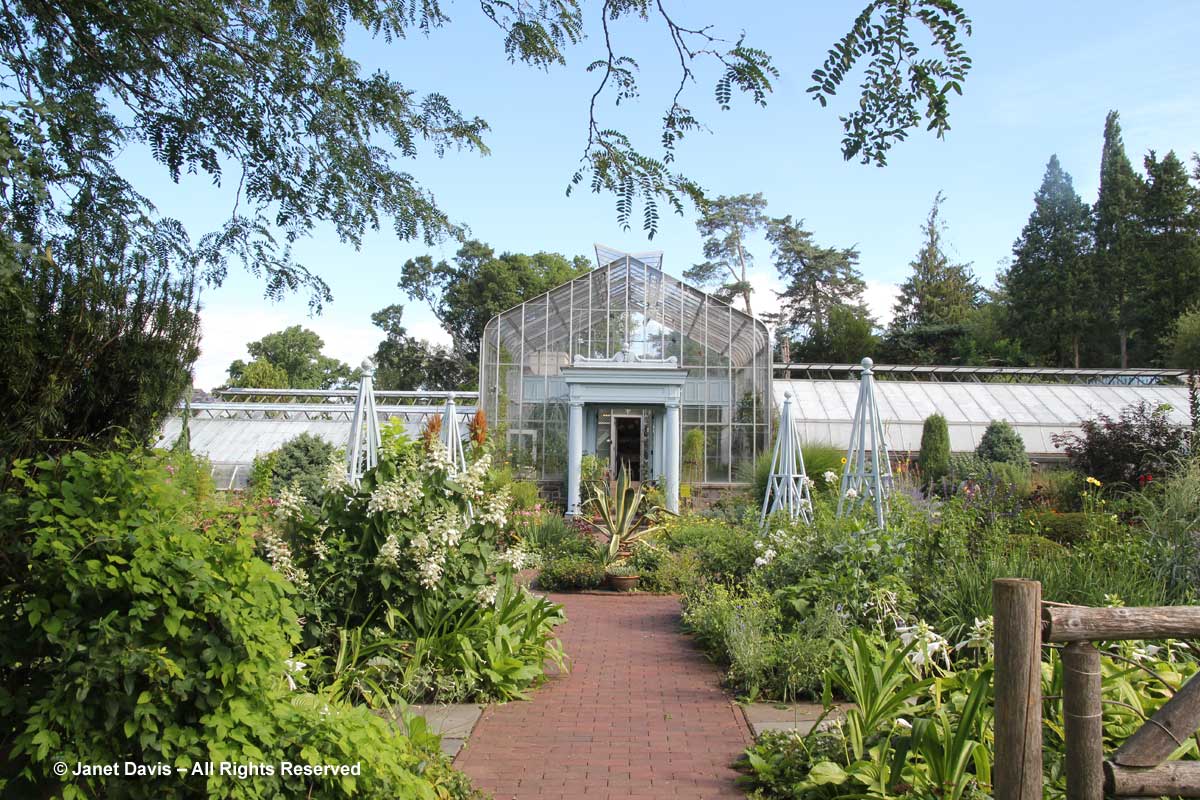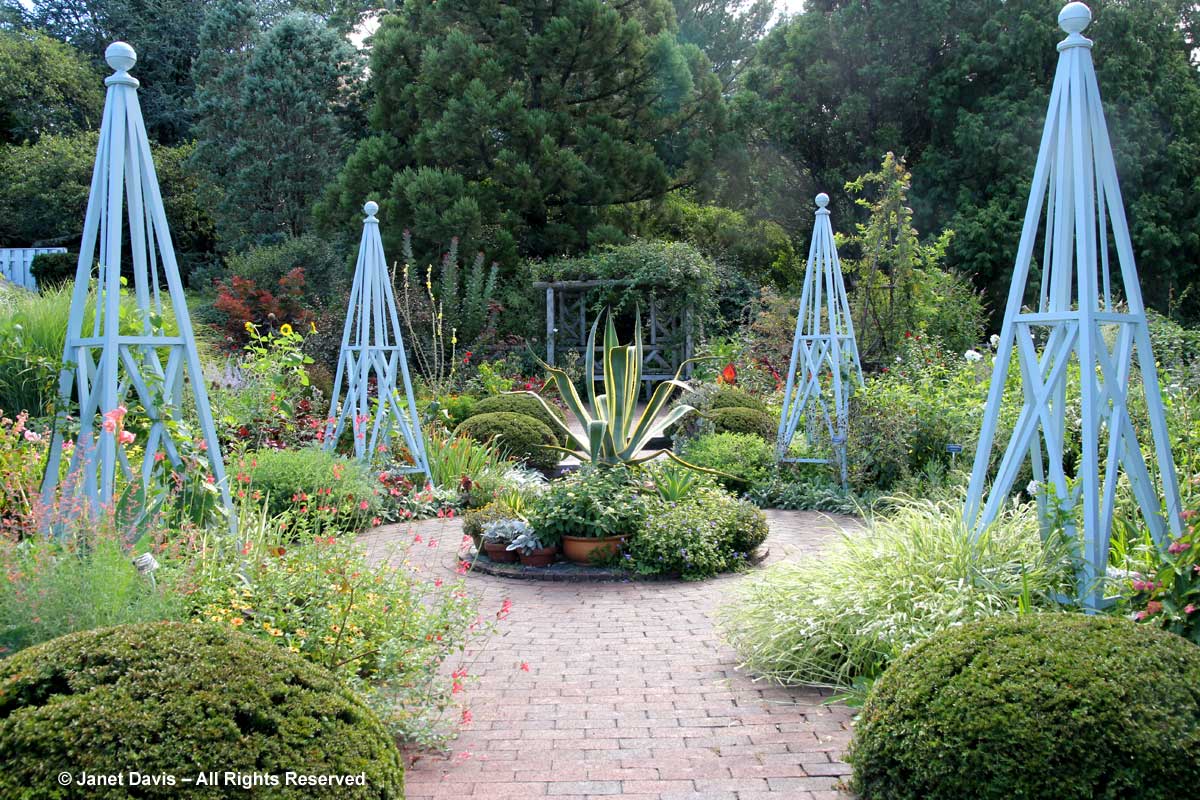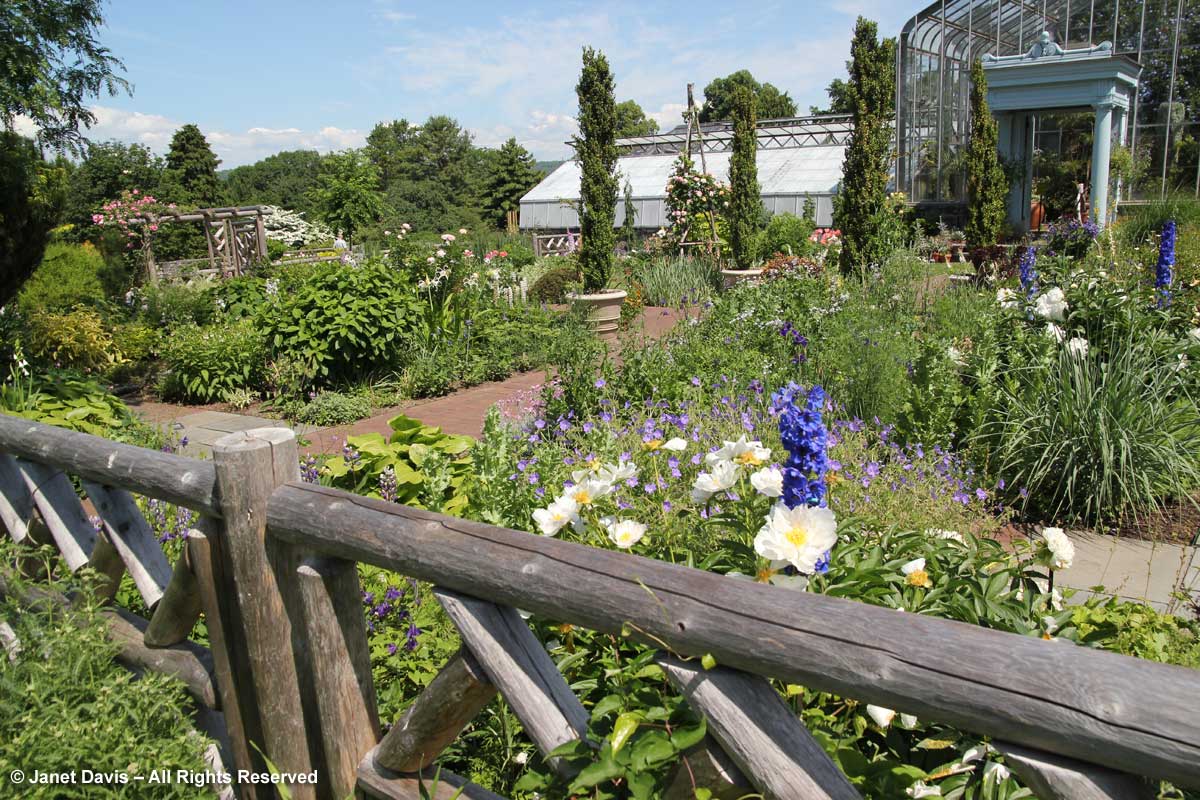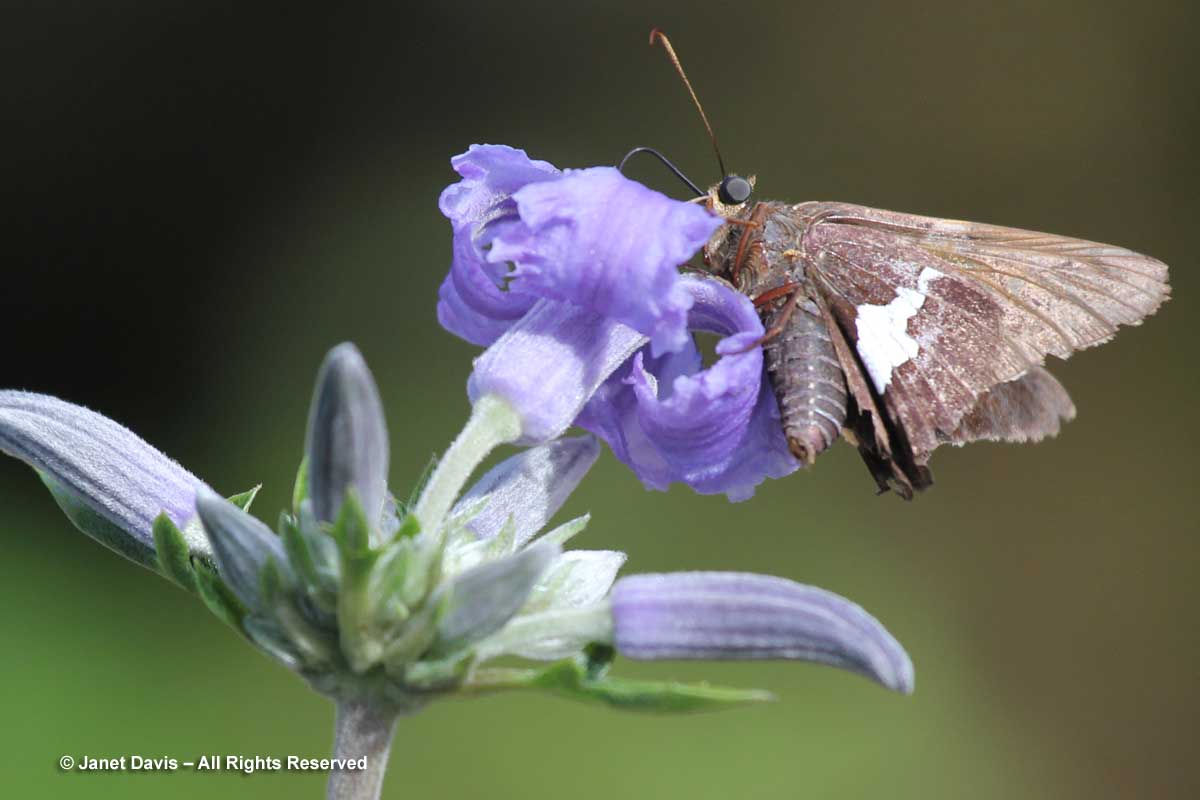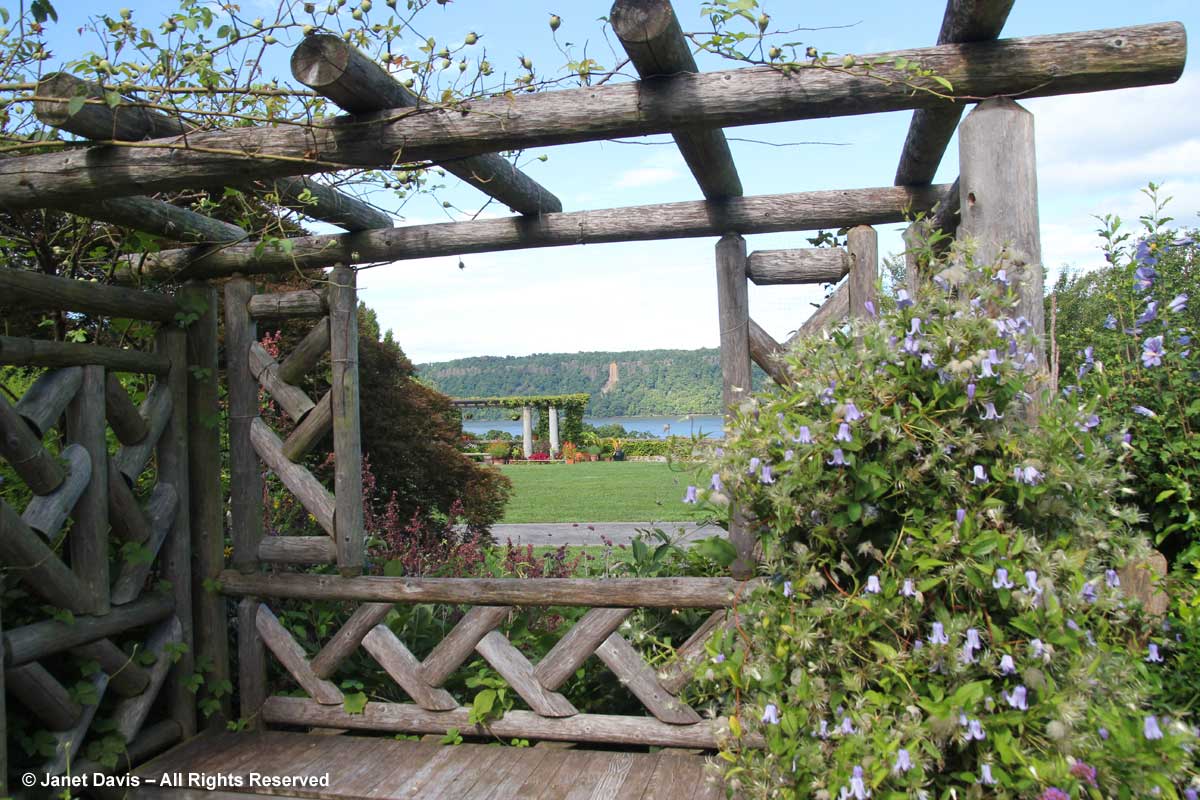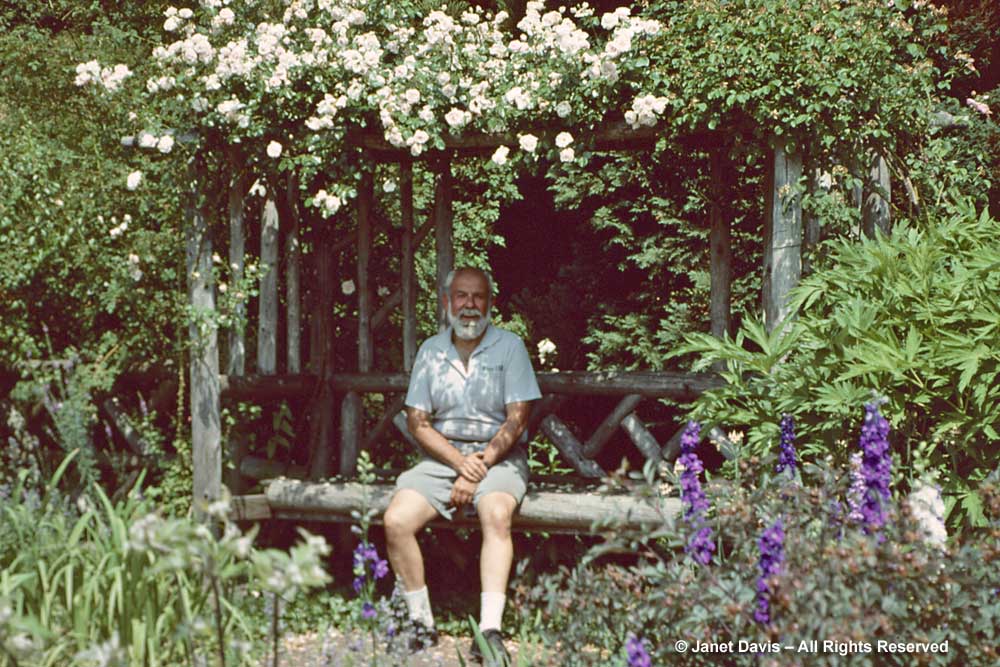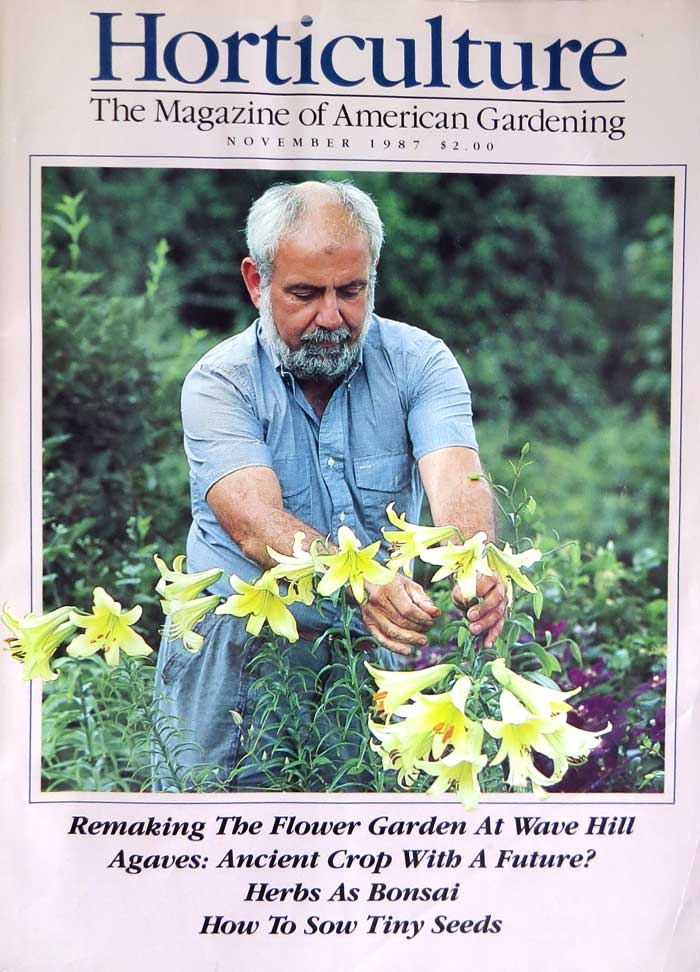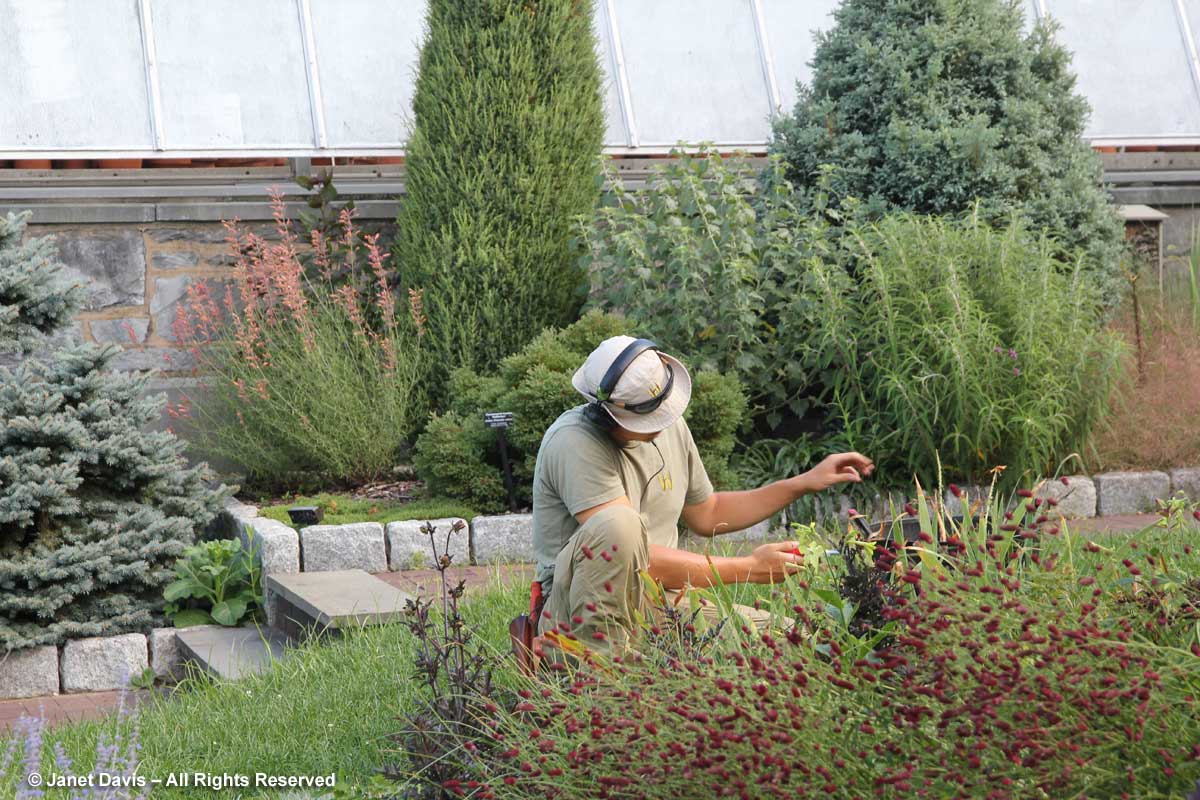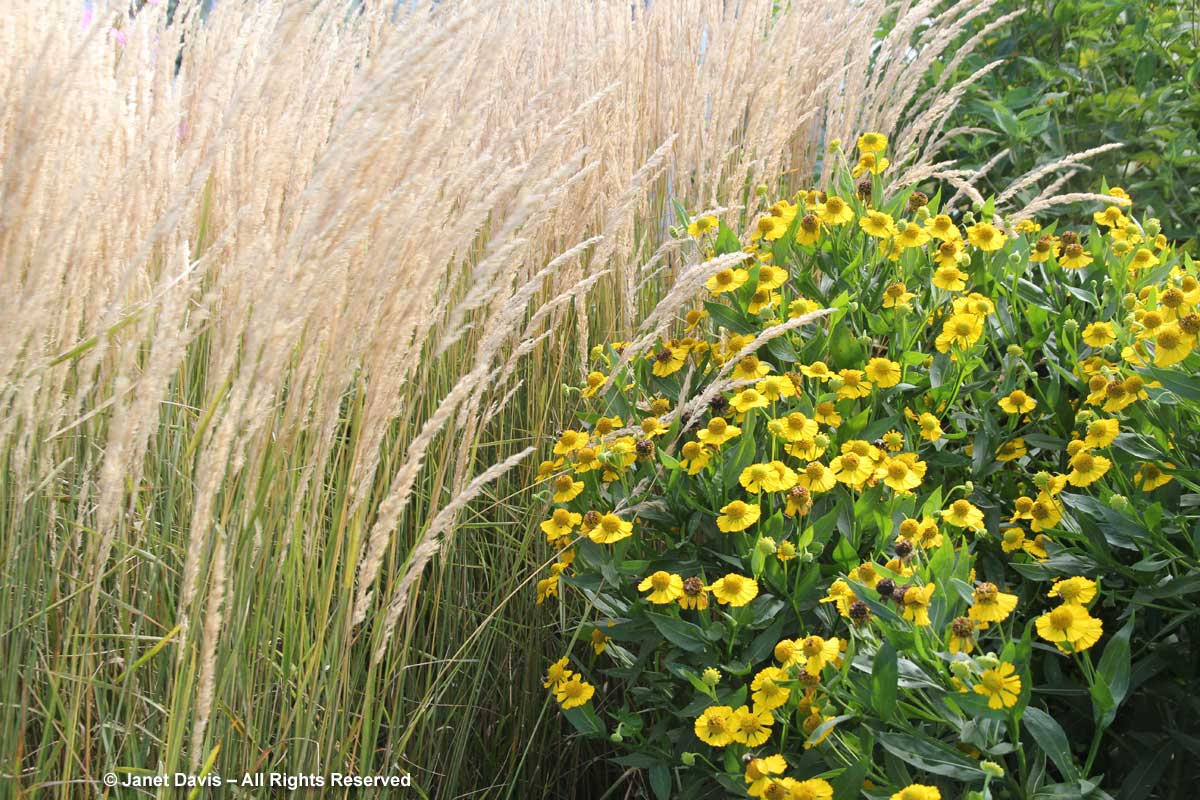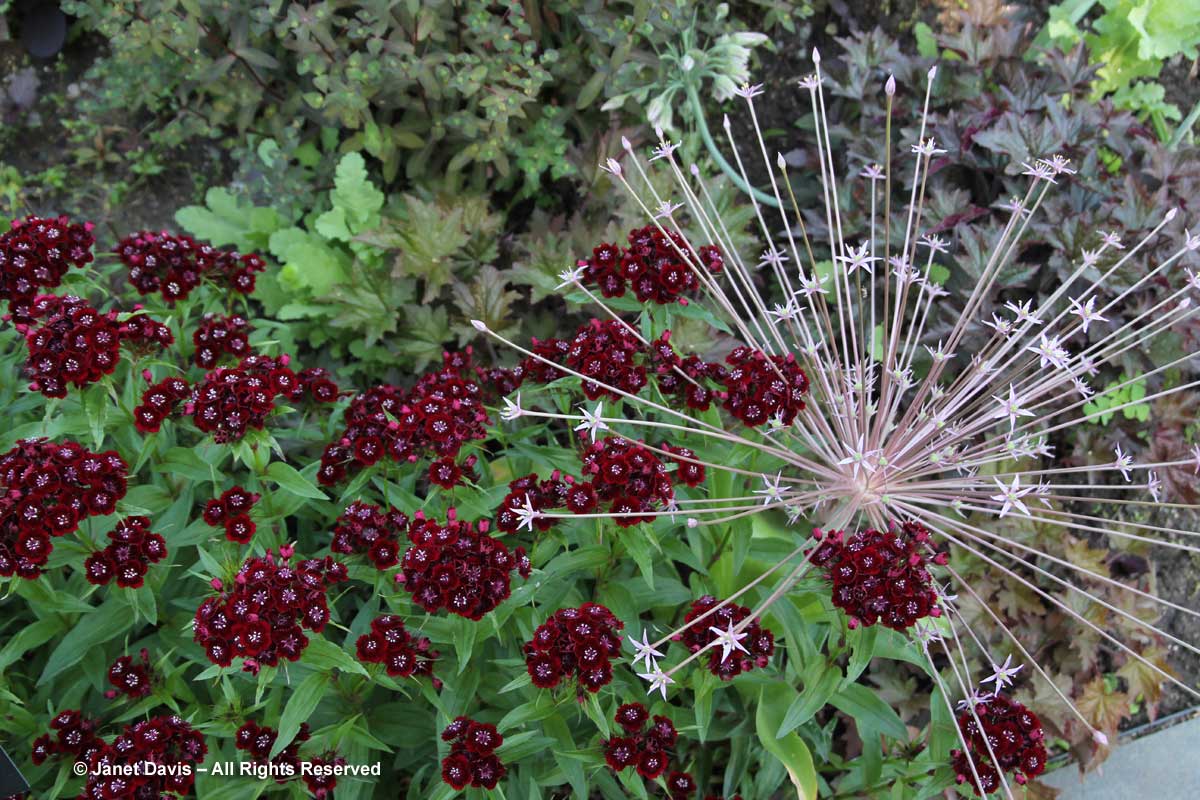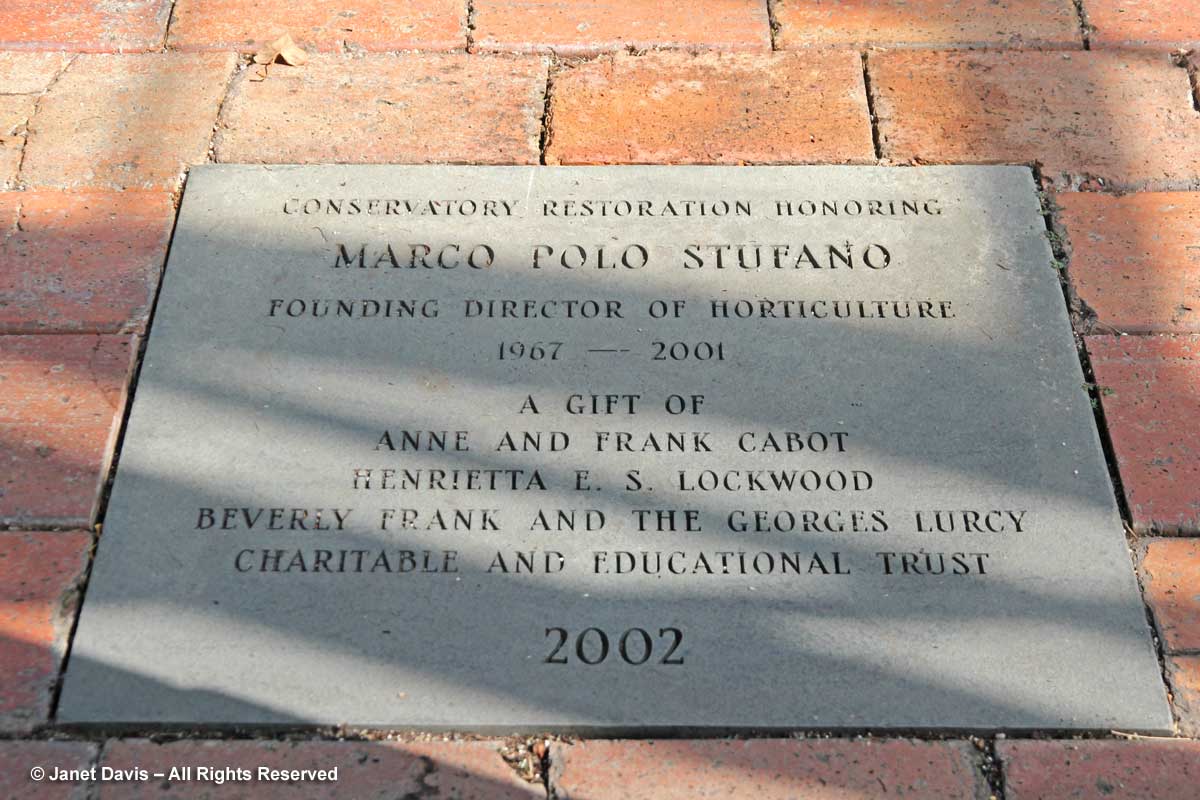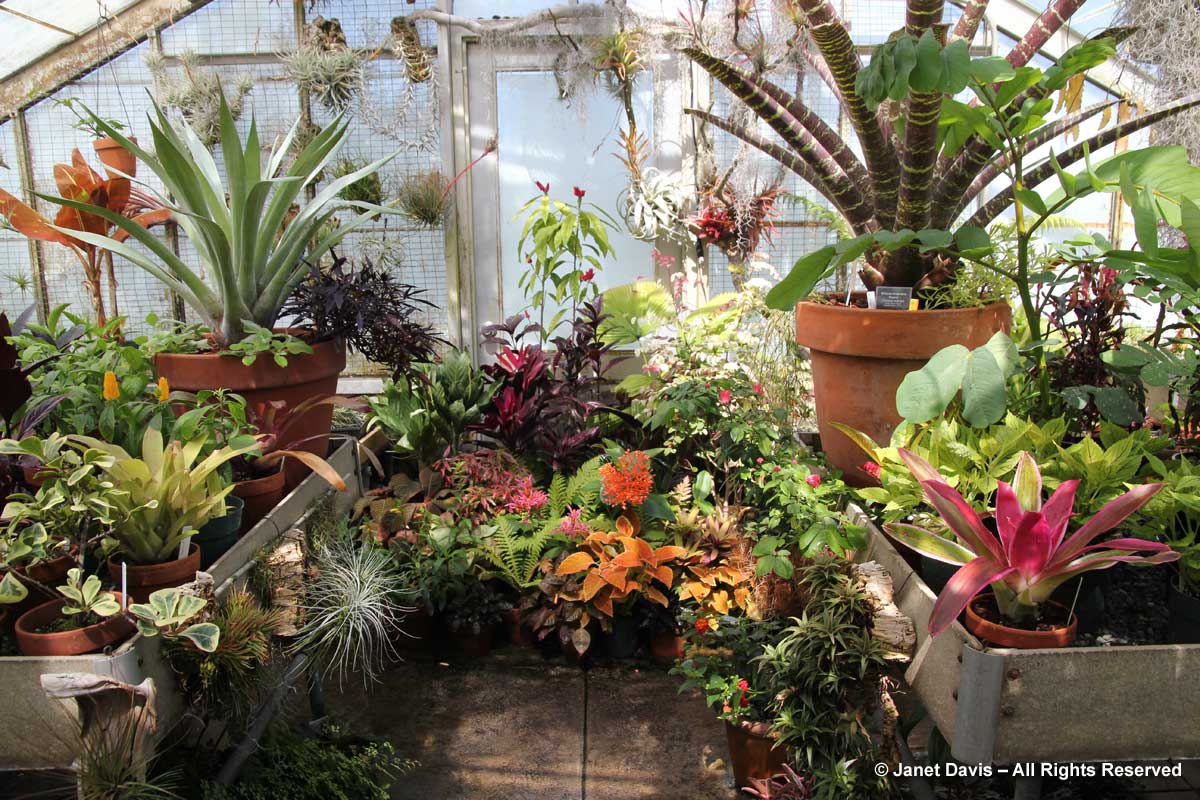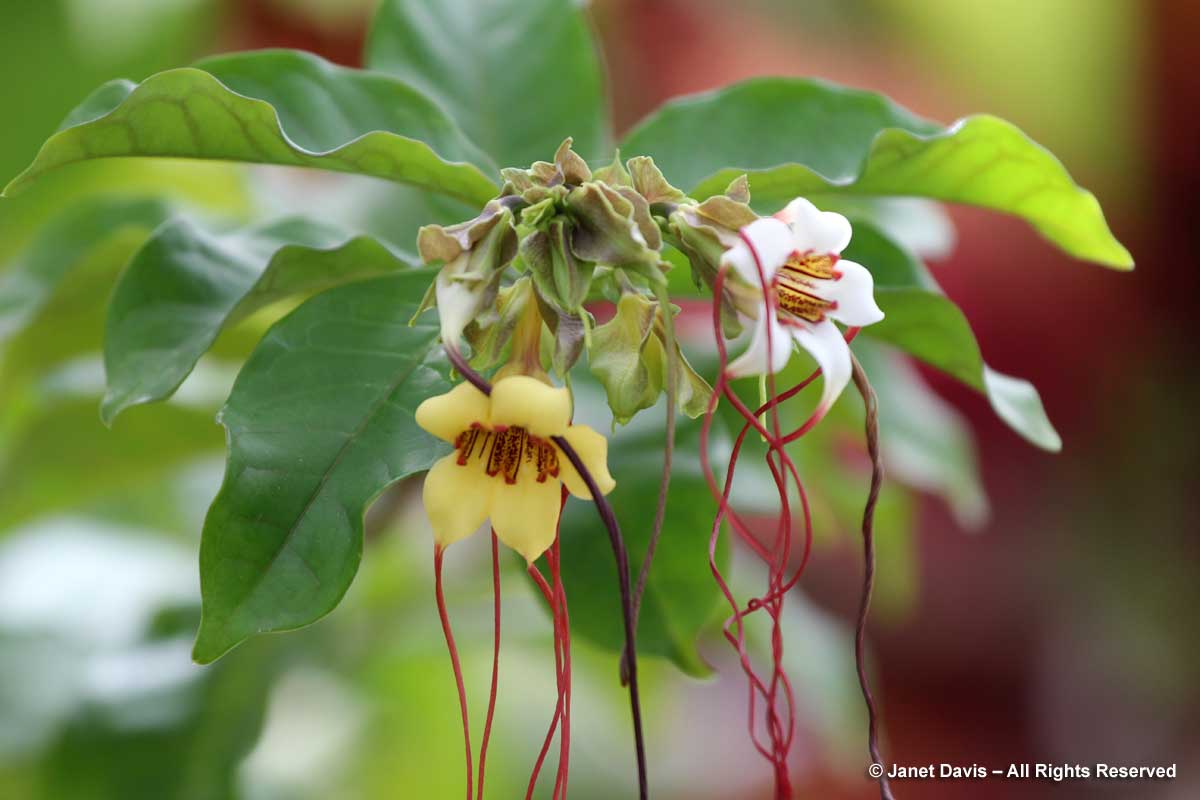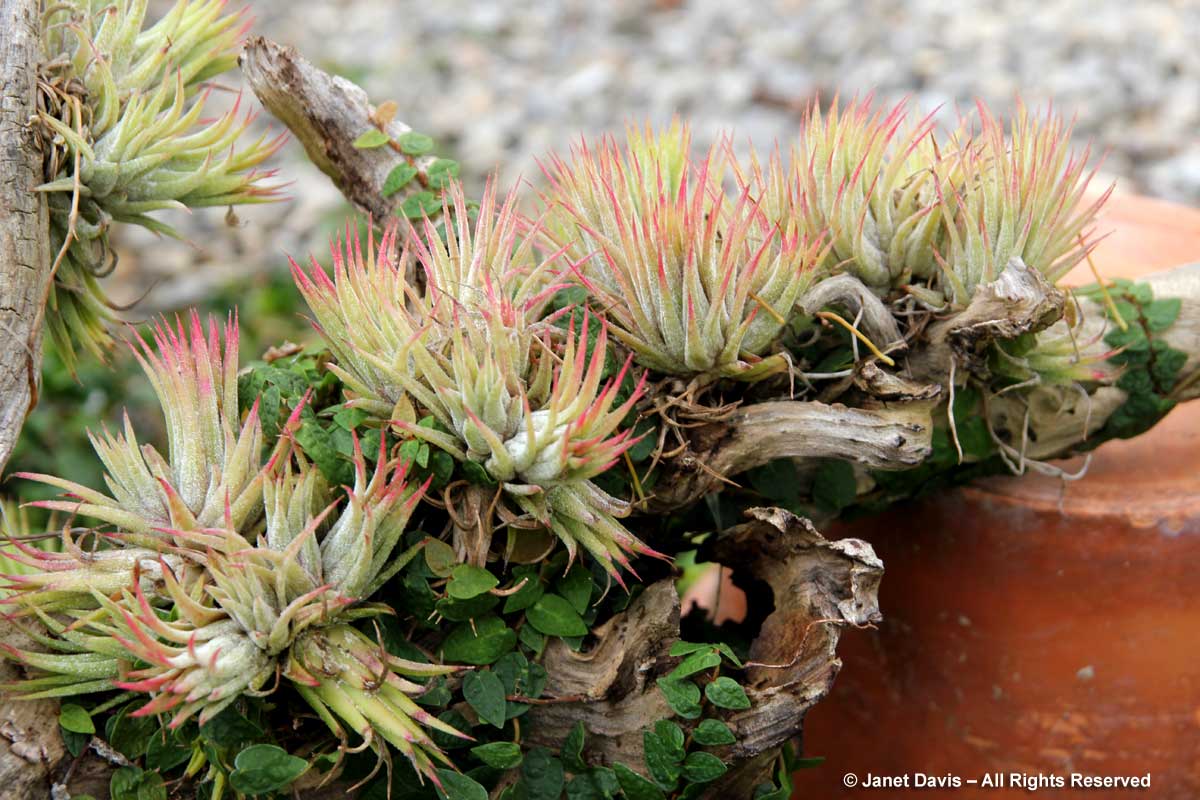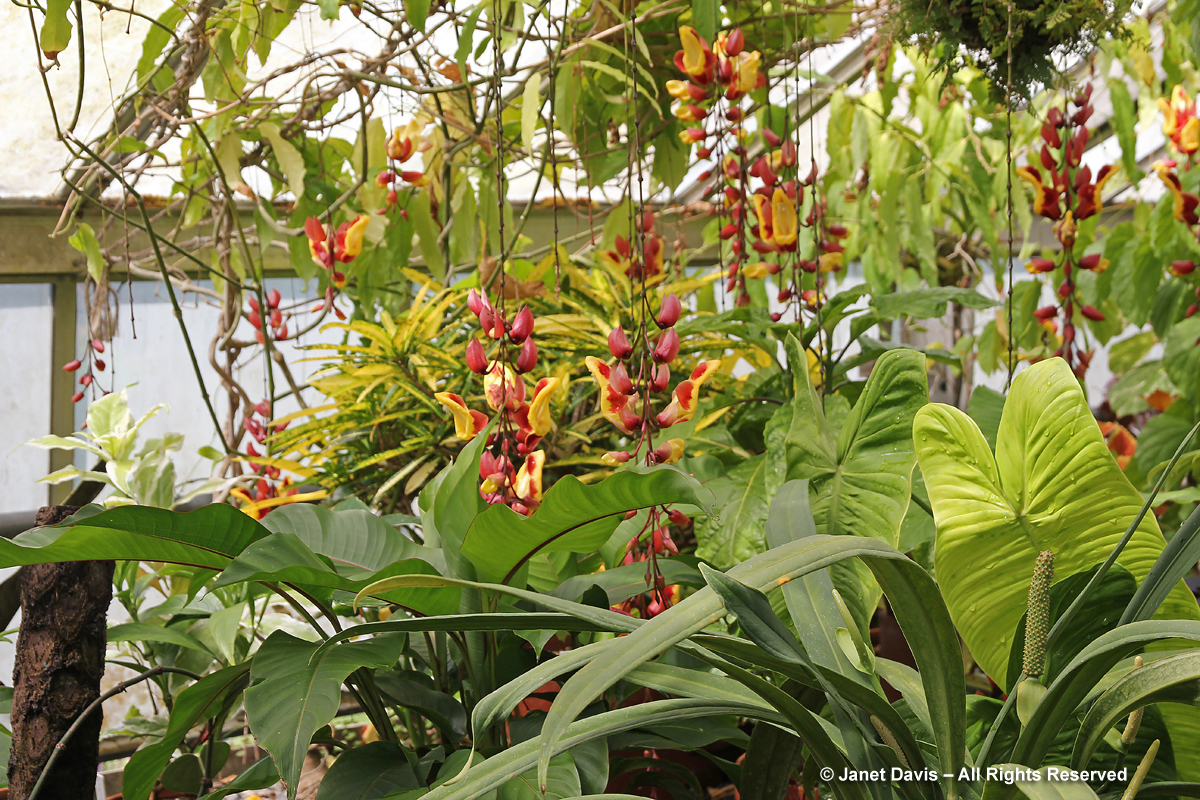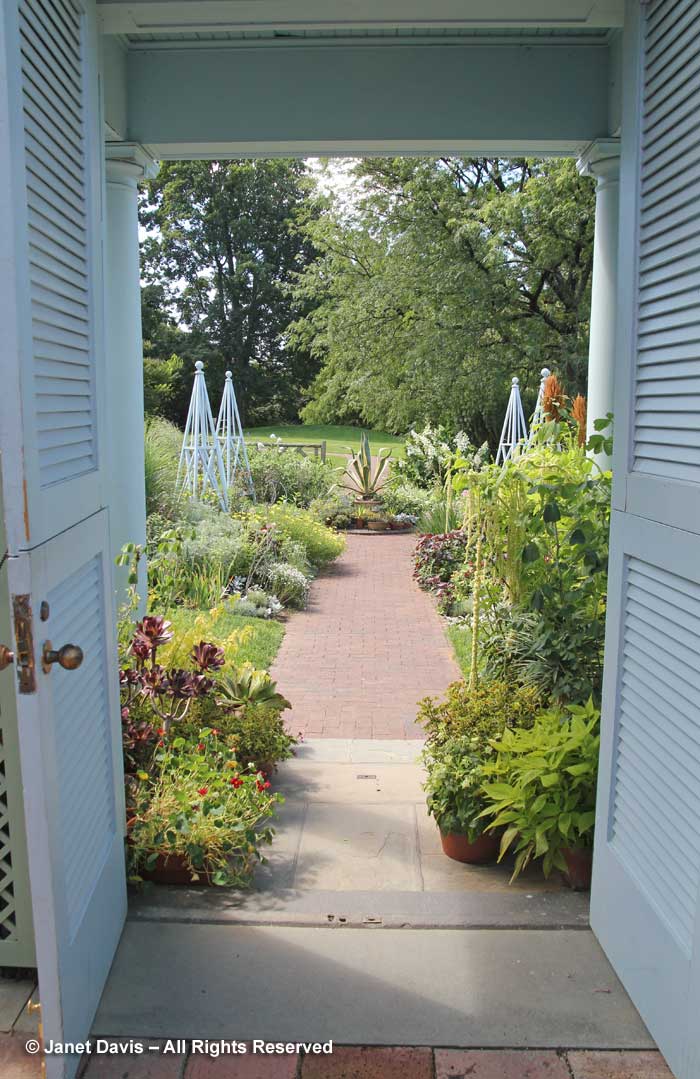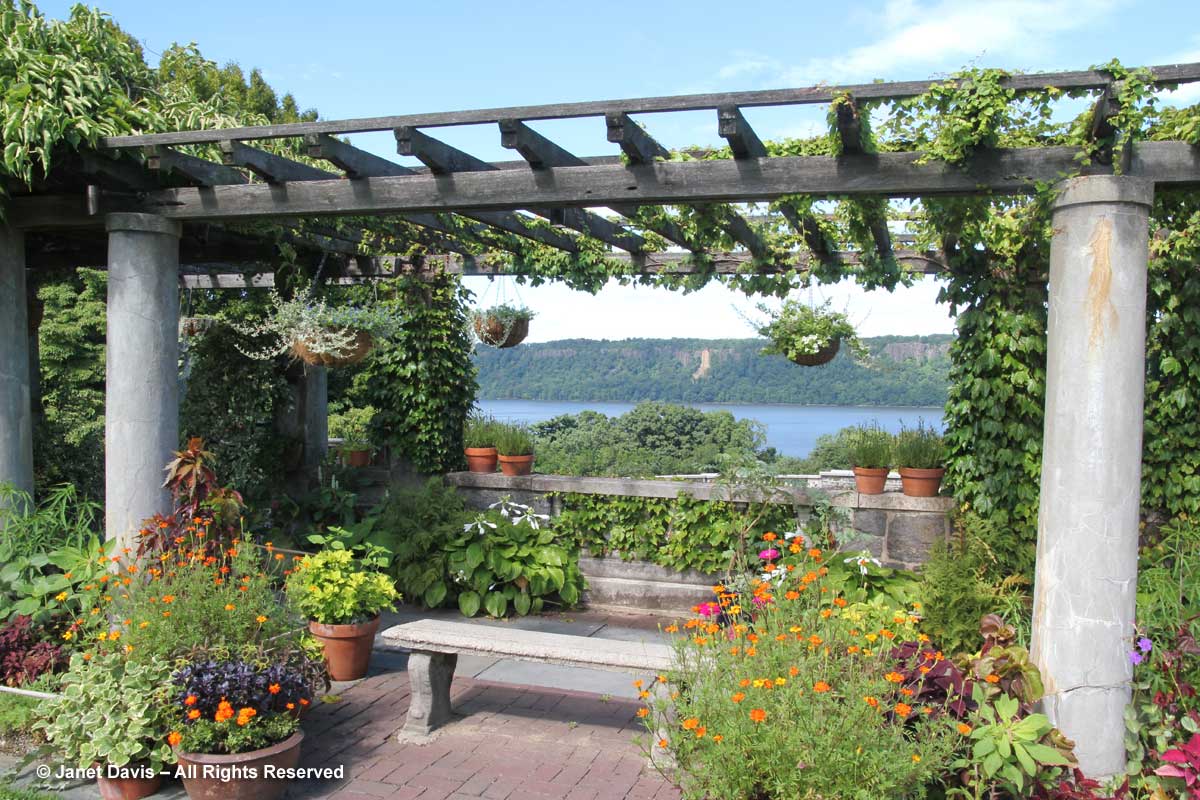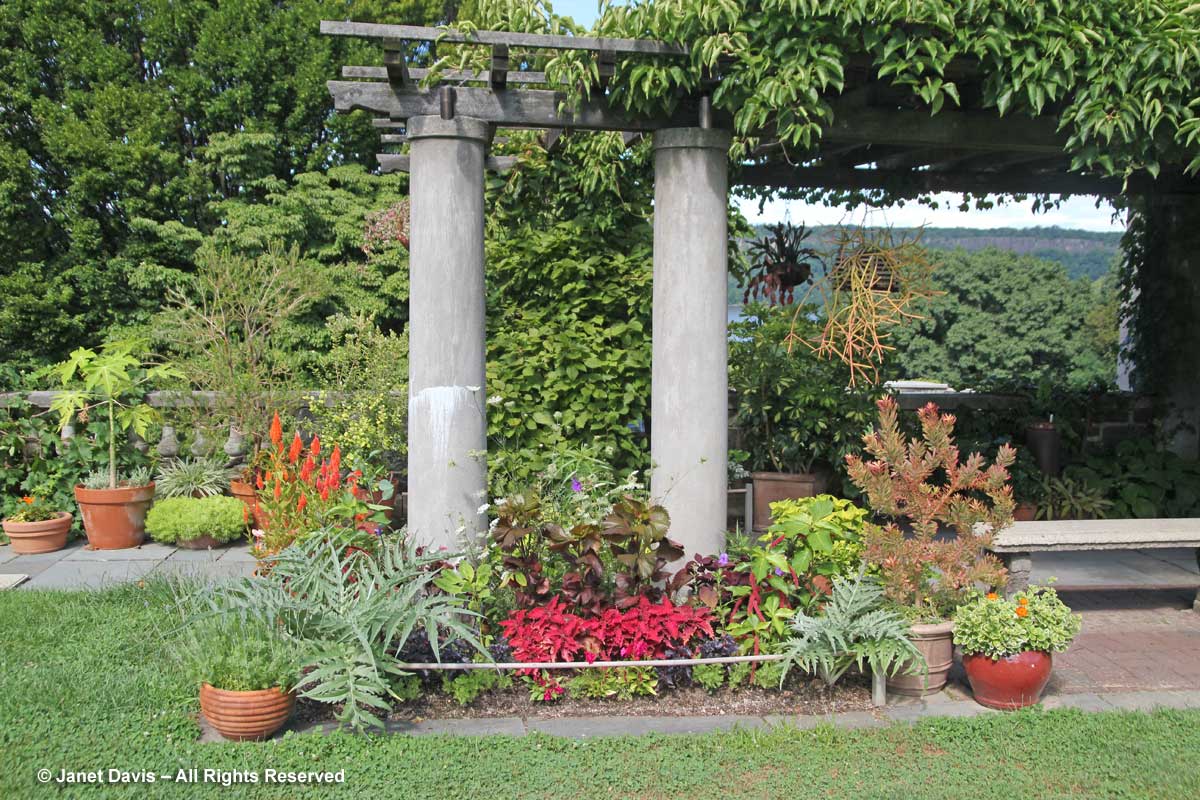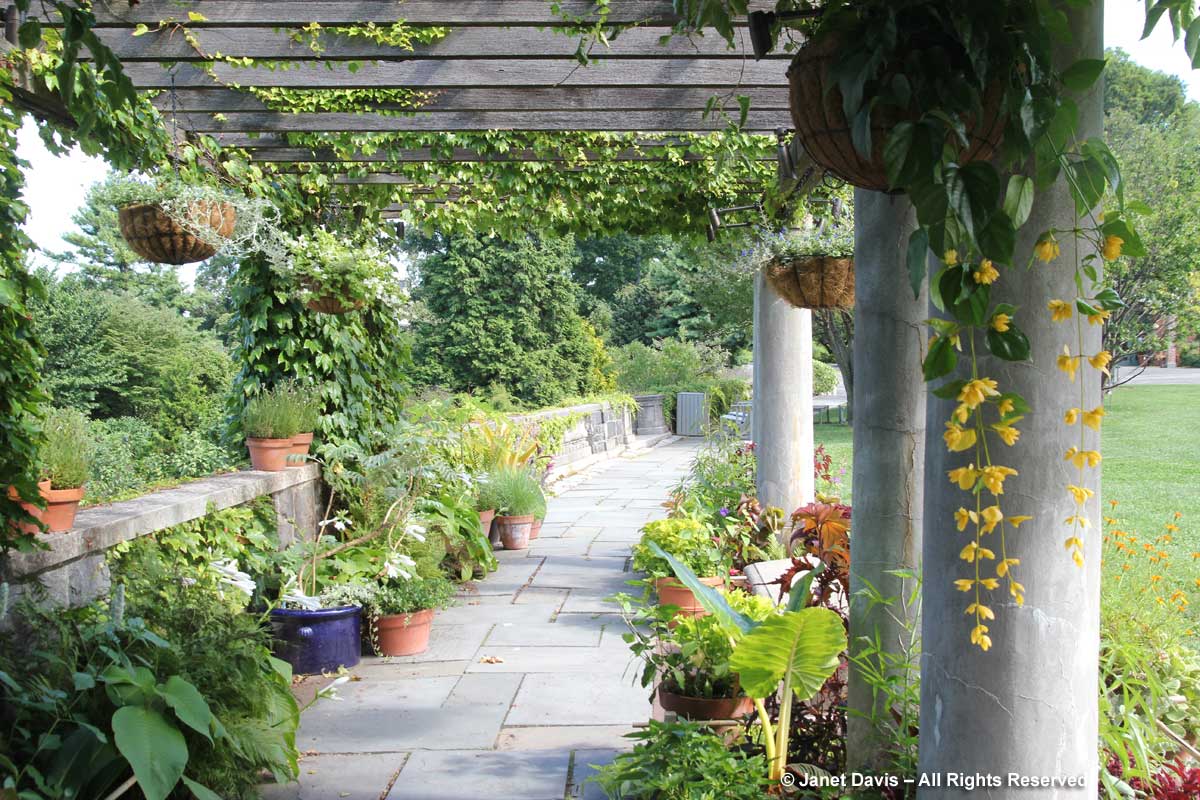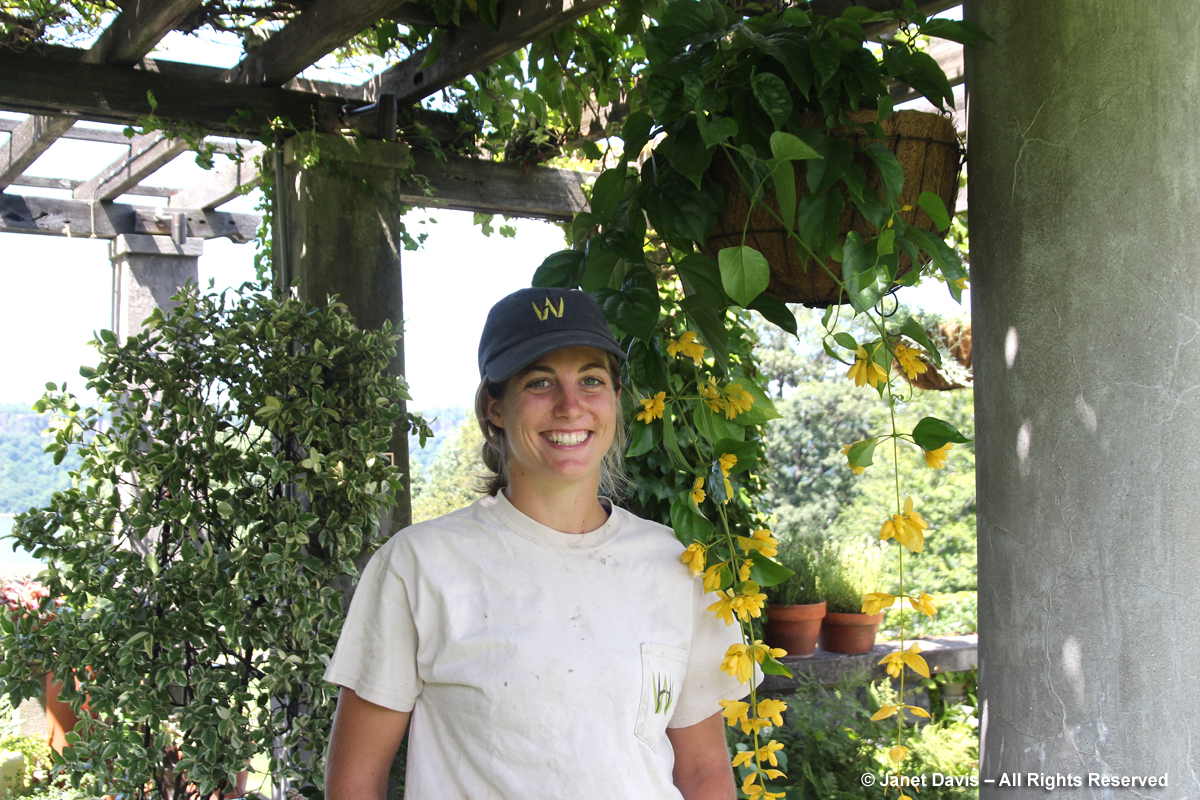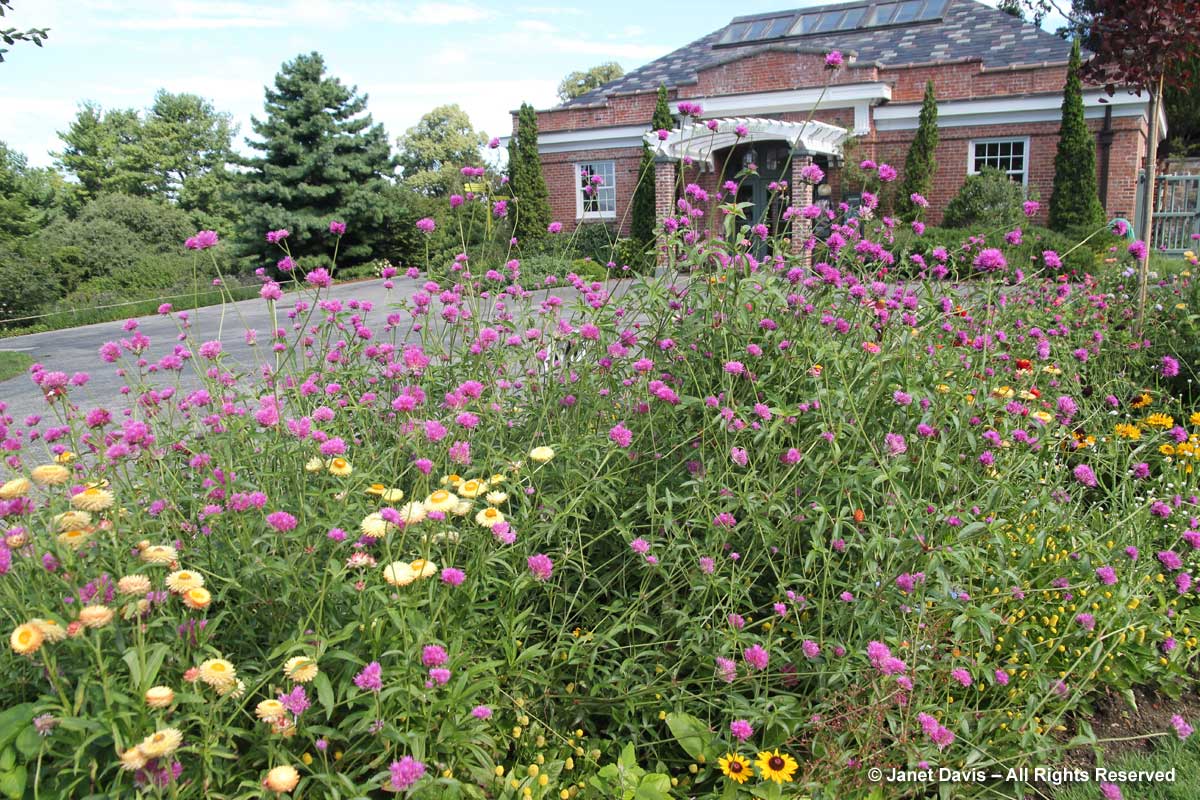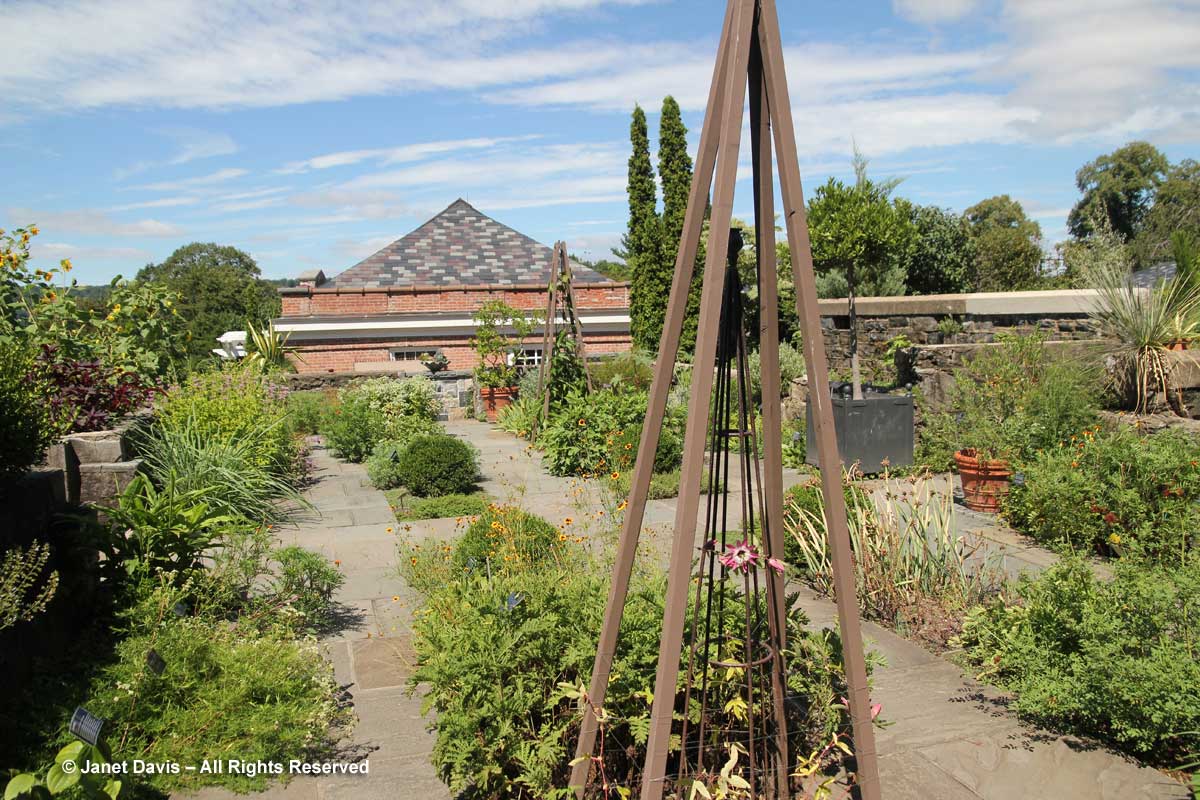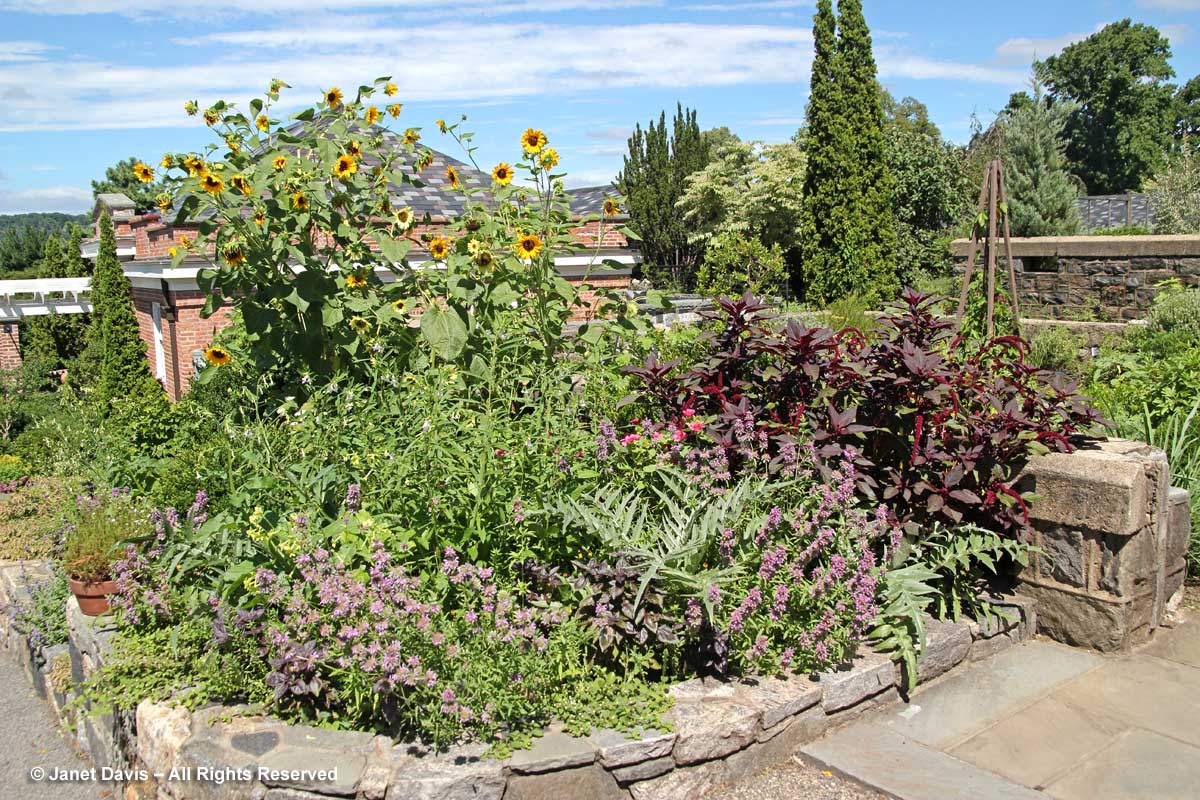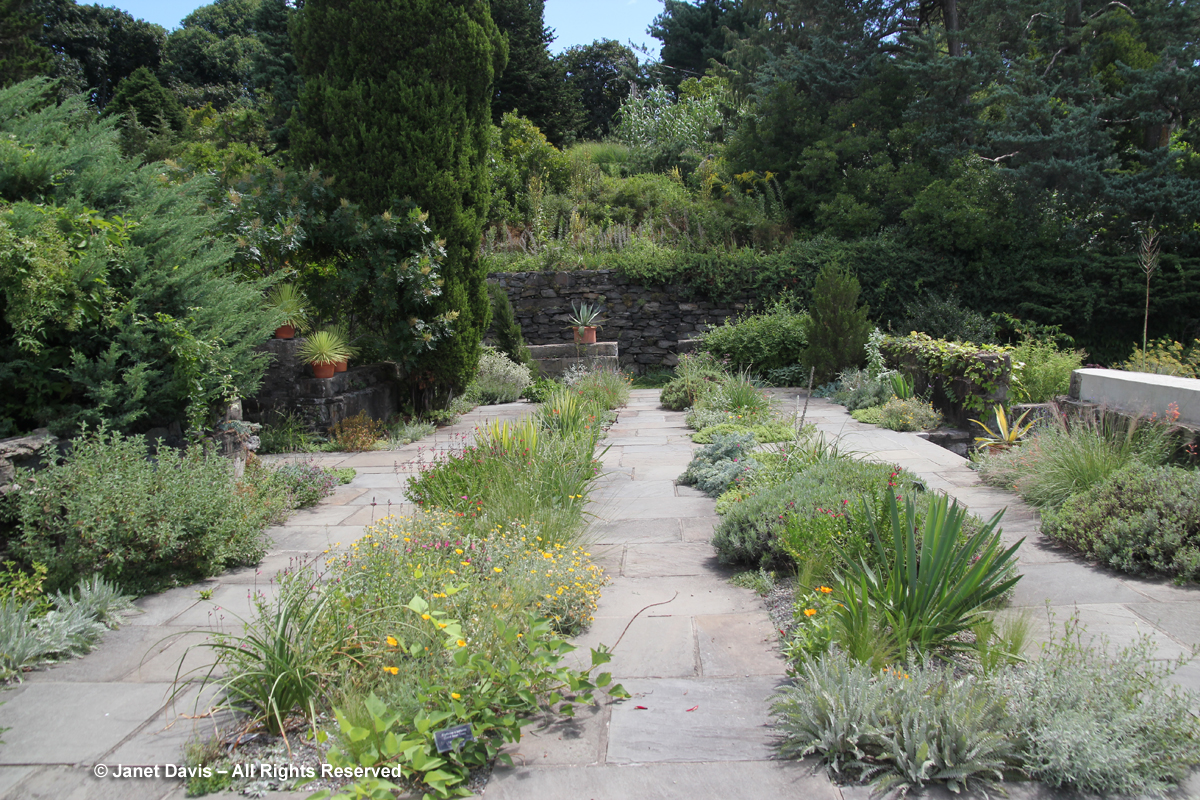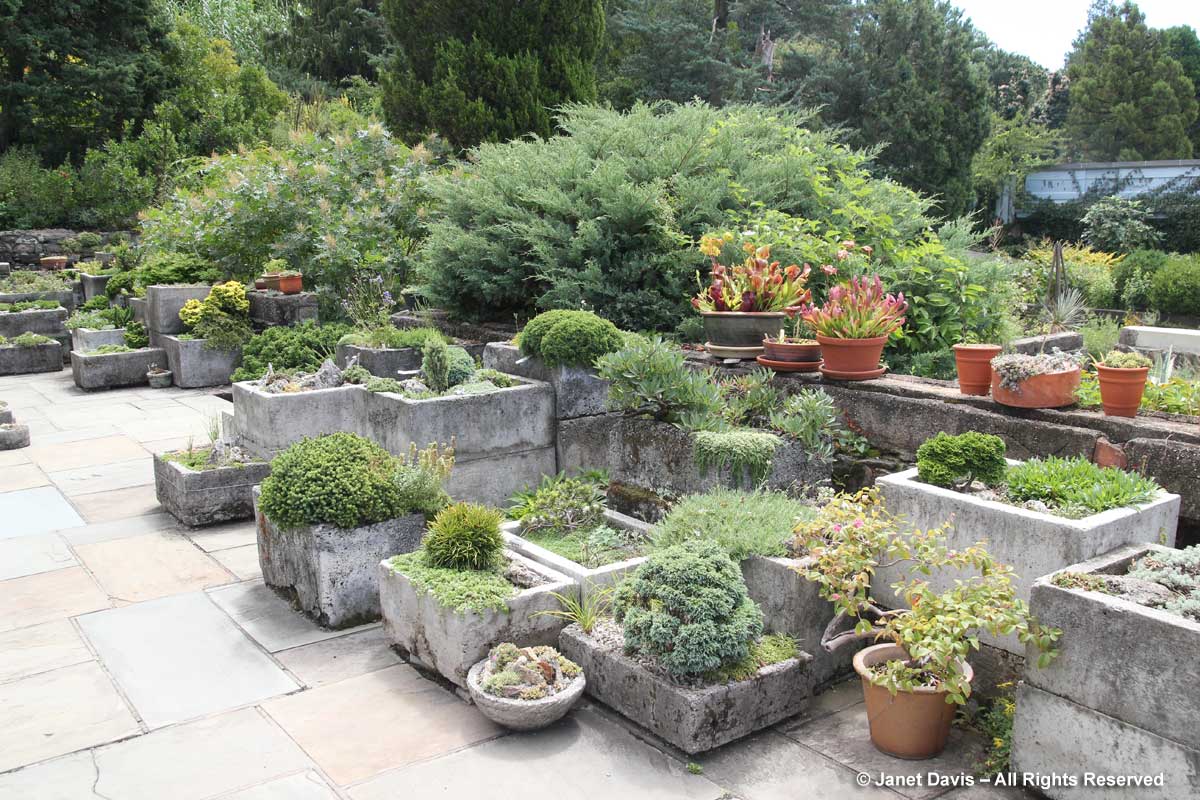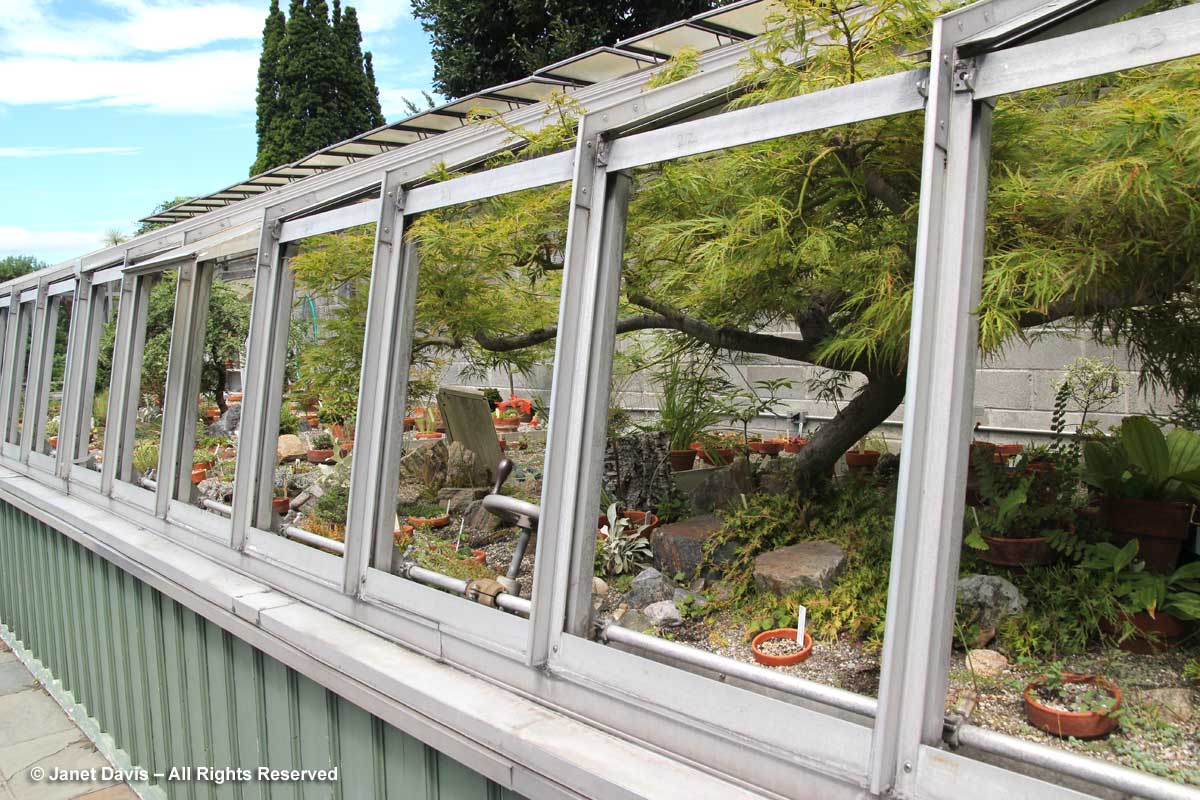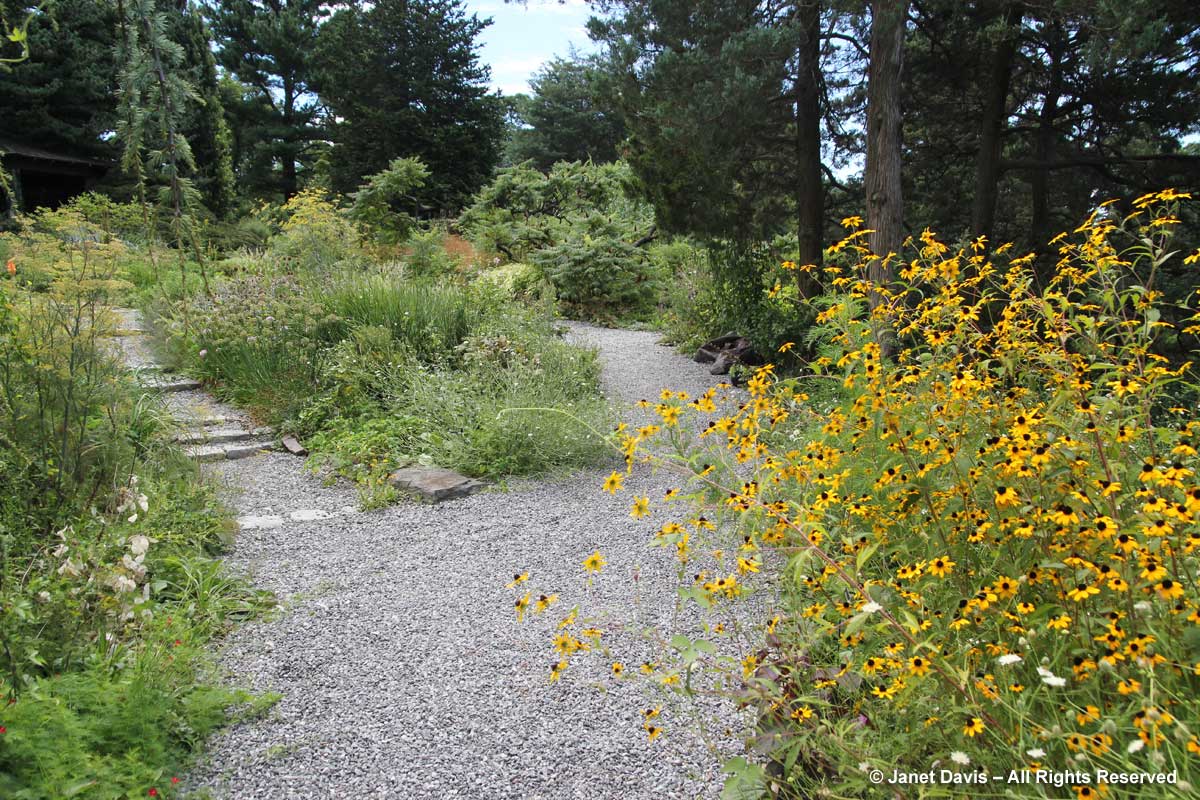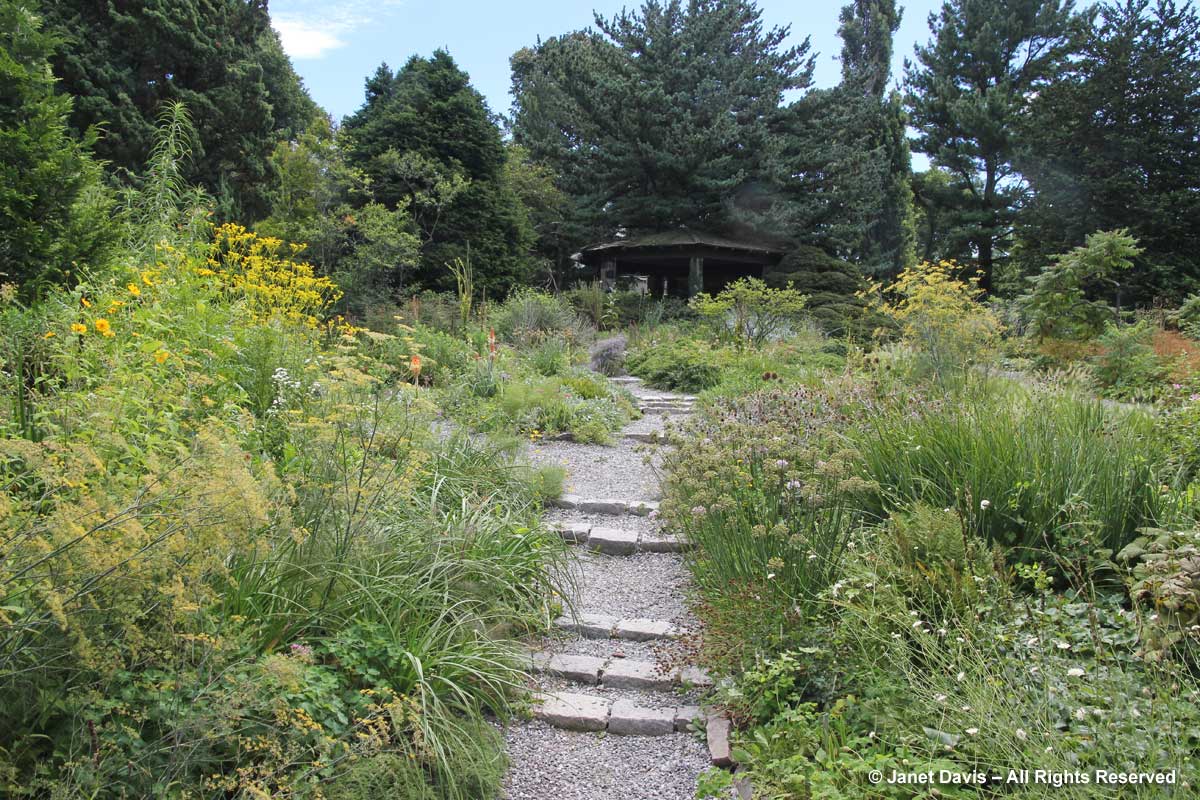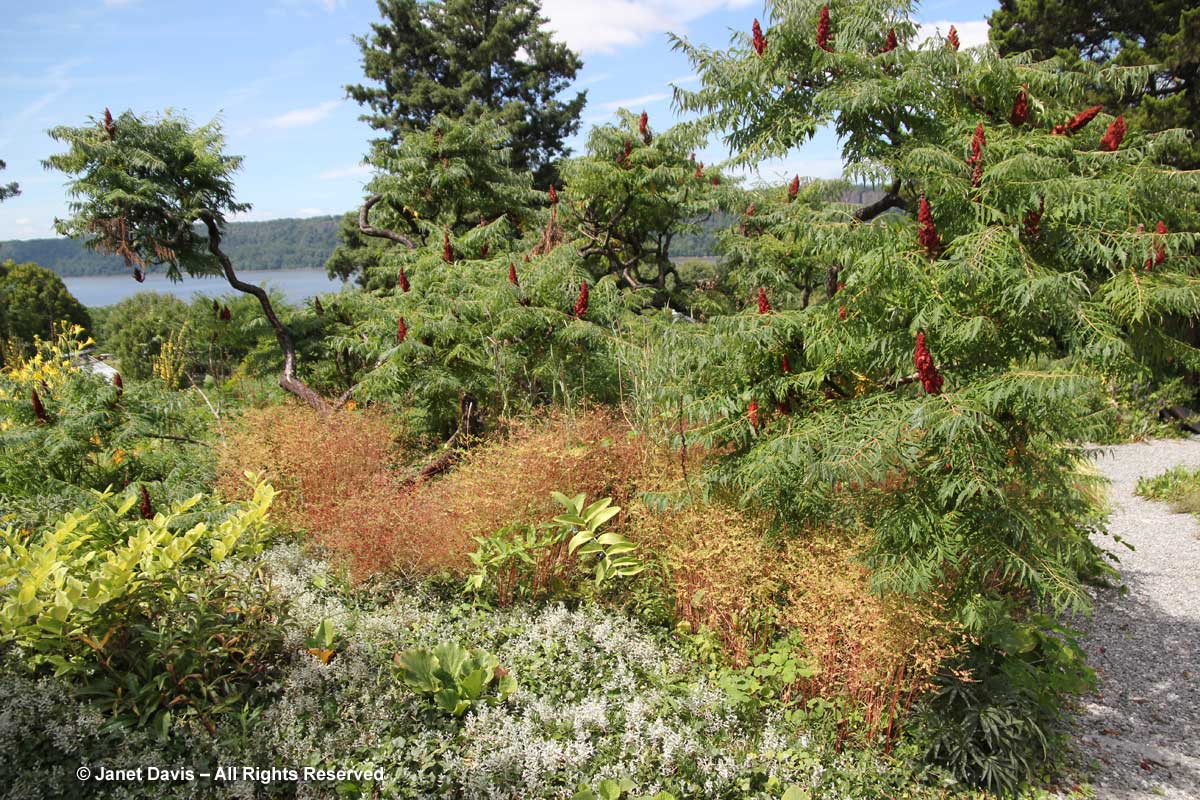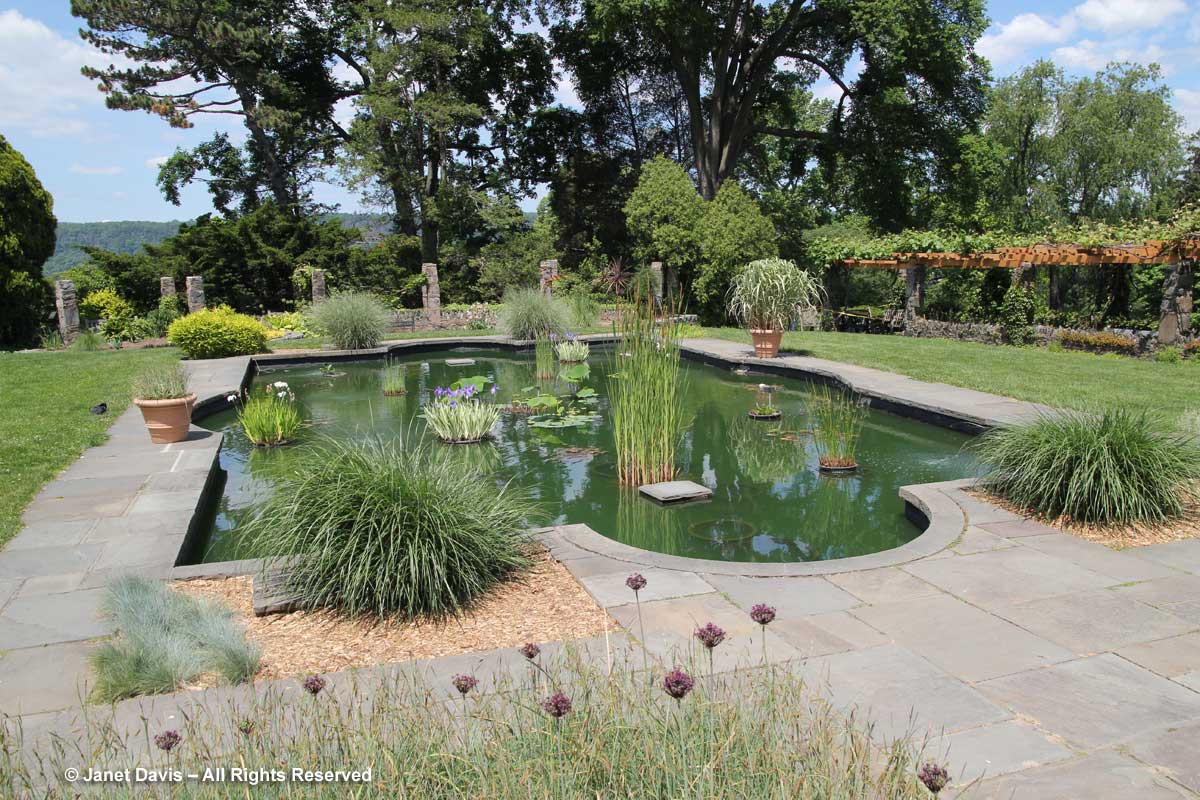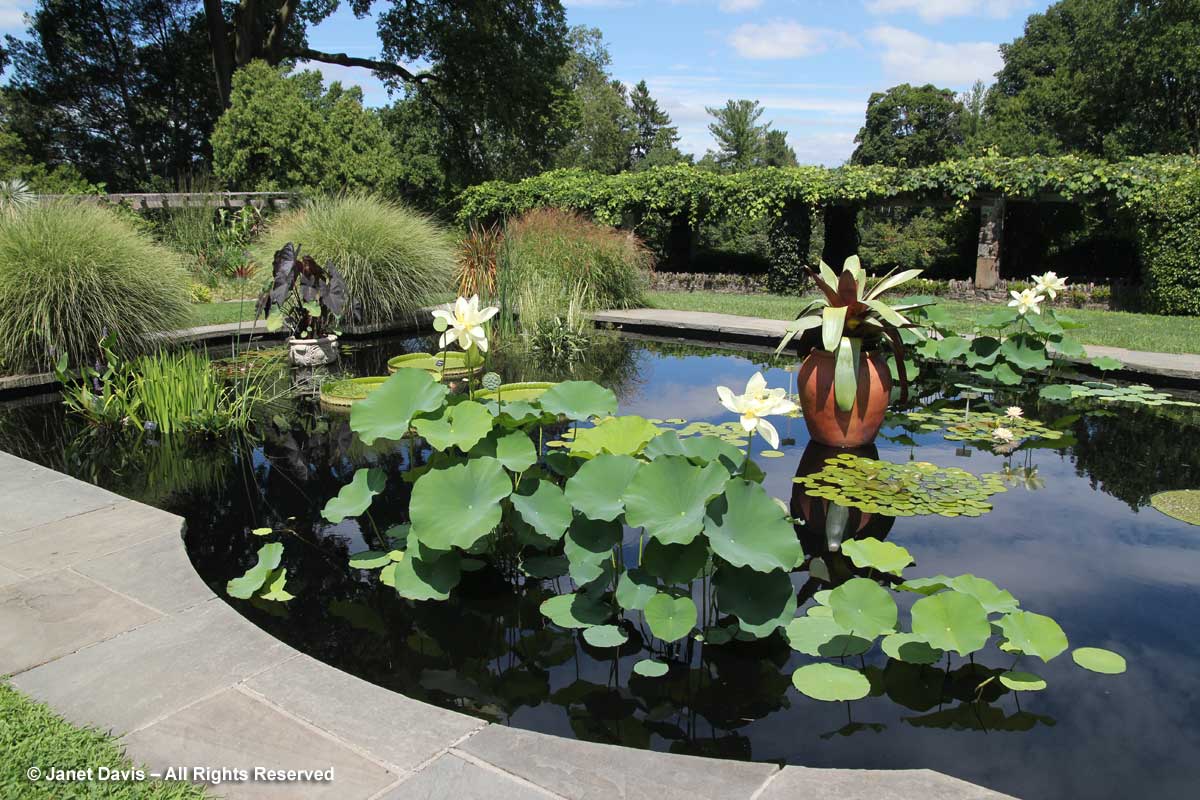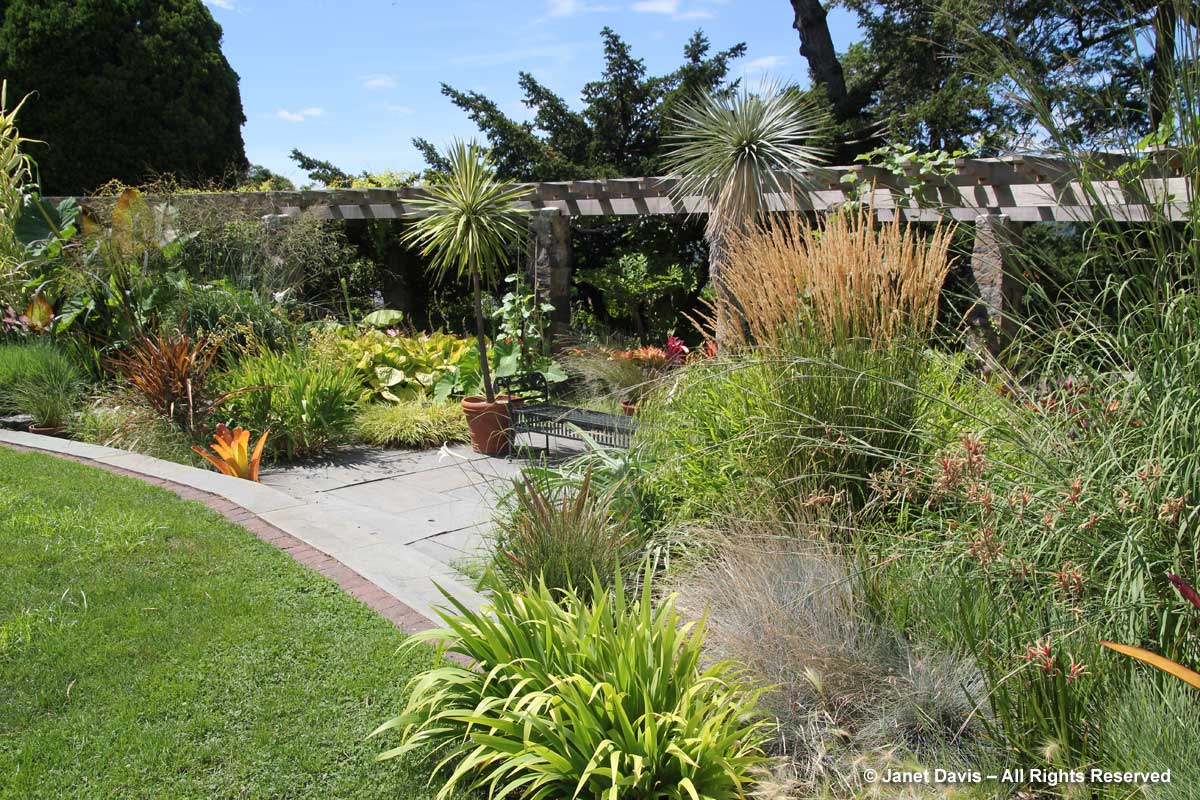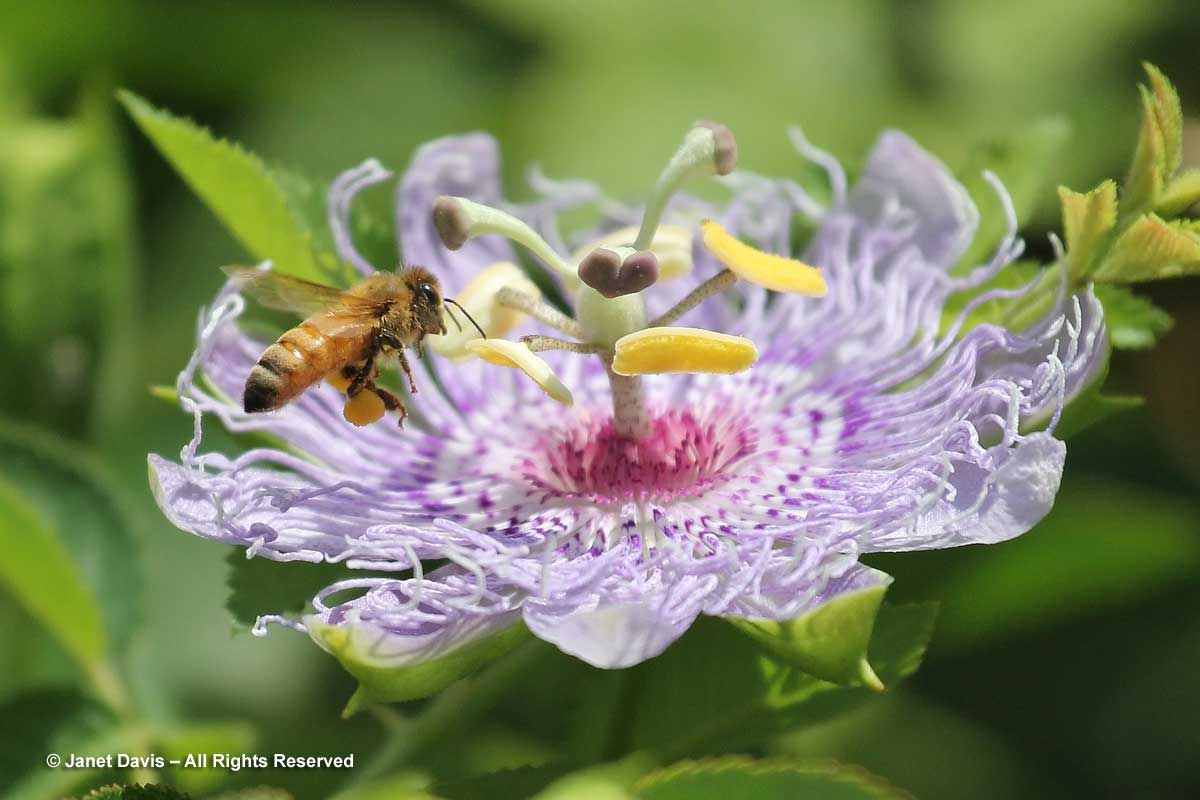One of my ‘must-do’ gardens when I have a few days in New York (apart from New York Botanical and the Conservatory Garden at Central Park and the High Line) is fabulous Wave Hill, in the Riverdale section of the Bronx. And so it was that in mid-August, I caught the Metro North ‘Hudson Line’ train at Grand Central Station and took my comfy window seat for the scenic ride along the Hudson River. (Excuse the dirty windows, please – not my fault!)
When you get off at Riverdale-Wave Hill, you really should wait for the shuttle, which meets northbound trains at 9:50am, 10:50am, 11:50am, 12:50pm, 1:50pm, 2:50pm and 3:50pm. (Return shuttles for southbound trains leave Wave Hill’s front gate at 20 minutes past the hour, from 12:20pm through 5:20pm). But I was feeling energetic – and had forgotten how steep the hill is and how long the walk from the station up towards the garden, set in a lovely, leafy Bronx neighbourhood. So I walked.
Wave Hill, overlooking the Hudson River and the towering Palisades on the New Jersey shore, was built by lawyer William Morris in 1843 to serve as his country home. It was enlarged by publishing scion William Appleton in the late 1800s, and played host to visiting notables such as Thomas Huxley. Teddy Roosevelt wasn’t yet in his teens when his parents rented the estate in the summers of 1870 and ’71, and likely helped to foster in him the love of nature that propelled him to protect America’s wild lands as national parks. Perhaps its most famous resident was Mark Twain (Samuel Clemens), who leased Wave Hill from 1901 to ’03, and entertained guests in a tree house on the back lawn. Later residents included conductor Arturo Toscanini (1942-45). In 1960, Wave Hill’s last private owners, the Perkins-Freeman family, deeded the estate to the city of New York and it was incorporated as a non-profit, one of 33 city-owned cultural institutions and specializing in programs of horticulture, environmental education, woodland management and presentations of the visual and performing arts. while seeking to “foster connections between people and nature”. (Sources: Wikipedia & Wave Hill) Wave Hill House underwent a two-year $9.8 million renovation and was reopened in 2013. When I visited the following June, I was impressed with the gleaming woodwork – not to mention the stunning bouquet of delphiniums in just the right shade of blue to enhance the walls.
As I headed into the garden this August, I was greeted by some lovely new touches to the Perennial Flower Garden, which I had last seen in 2014, including the beautiful, sky-blue tuteurs in each of the central four sections.
The flower garden, overseen by gardener Harneck Singh, consists of eight plots arranged in cruciform quadrants, each loosely colour-themed. And there’s always something big and beautiful from the greenhouses in the centre; this summer it was a luscious, variegated agave.
Those blue tuteurs add to the elegance quotient in the flower garden. Here’s how it looked in June 2014. below. Not nearly as dramatic.
There were a lot of silver-spotted skippers flying about, including this one on Clematis heracleifolia.
I enjoyed seeing Clematis crispa climbing the rose bower in the flower garden.
Speaking of rose bowers, I fondly recalled making former director of horticulture Marco Polo Stufano pose for me in one of the bowers, when I was there in 1994. Though it was terribly sunny and not great light for a portrait (especially with my limited photography skills more than 20 years ago), I do enjoy having this reminder of a very talented man who lent his expertise to the garden. Today, Louis Bauer is horticulture director and is putting his own creative mark on Wave Hill’s gardens.
My 1994 visit was seven years after Marco Polo Stufano was featured on the cover of the November 1987 issue of Horticulture magazine. (Photo by Allen Rokach) And yes, I am a packrat, and I really should clean out the mags in my office!
The story inside the magazine was about the flower garden, as redesigned by then curator of gardens John Nally. His name is now memorialized in Wave Hill’s practice of hiring interns – called Nallies – to work in the garden. I had a little chat with one of Wave Hill’s 2016 Nallies, Gabe Santoriello, who was carefully deadheading flowers in the red garden. He made me chuckle when I called out ‘Gabe’, to ask him about a plant. “You know, I had my earphones in,” he said, “but you sounded just like my mom when you called me.” (I’ve had some family experience calling out to young men!)
Being late summer, grasses were good-looking, like this Calamagrostis acutiflora with Helenium autumnale.
I loved the duo below in the red garden, when I visited in June 2014: ‘Heart Attack’ sweet william (Dianthus barbatus) and the airy seedheads of Allum schubertii. Isn’t this cool?
Walking into the entrance to the tropical and desert greenhouses, I saw that Marco Polo Stufano has also been honoured with his name on the conservatory, a gift of Frank and Anne Cabot, who also founded The Garden Conservancy. .
Lovers of tropical plants should be prepared to spend a lot of time exploring the jewels in the tropical house.
What a fascinating plant: Strophanthus preussii. I had a discussion with plant nerd friends on Facebook about the evolutionary significance of the long, red corolla threads. We couldn’t come to an agreement about why nature gave this African liana such decorative accents (but nature rarely creates adaptations for the fun of it).
I loved seeing this little arrangement of air plants (Tilliandsia ionantha).
This is what greeted me in the tropical house in June 2014: can you say Indian clock vine (Thunbergia mysorensis)?
Crossing into the desert house, I paused to take in the stunning variety of small succulents and cacti.
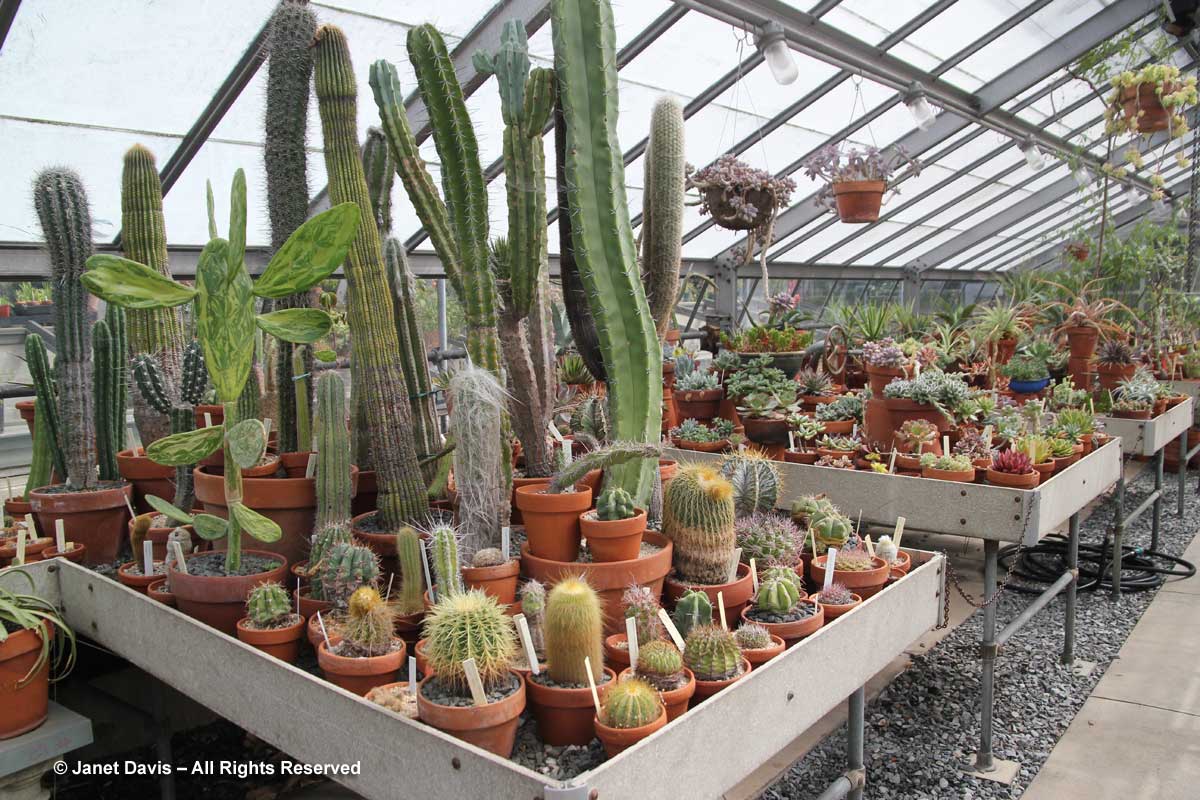
Walking back into the garden through the blue conservatory doors (matching those tuteurs), I was reminded how effective a little paint is at drawing landscape elements together – and how complex the textural plantings in those containers just outside the doors were!
I never visit Wave Hill without heading down to the long pergola overlooking the Hudson River and the Palisades on the New Jersey shore. Apart from the stunning view, there are loads of wonderful plants displayed there!
Another section of the pergola.
And lookng towards Wave Hill House along the pergola.
That cascading, yellow-flowered vine intrigued me, but I had no idea what it was. So I cornered Wave Hill gardener Coralie Thomas who carefully dug out the label to show me: Petraeovitex bambusetorum, or Nong Noch vine, a Vietnam native. Thank you Coralie!
Then it was time to move on to some of the other wonderful gardens, but I stopped to take a quick shot of the happy confection of flowers (gomphrena ‘Fireworks’ & yellow strawflower) in the Paisley Garden across from the Visitor Centre.
Immediately behind the conservatory on a rise of land are two long gardens. The first is the Herb Garden…
…. with its late summer profusion of aromatic herbs.
The second is the Dry Garden.
There are always interesting surprises dotted about here and there, like this Boophane disticha on the steps. 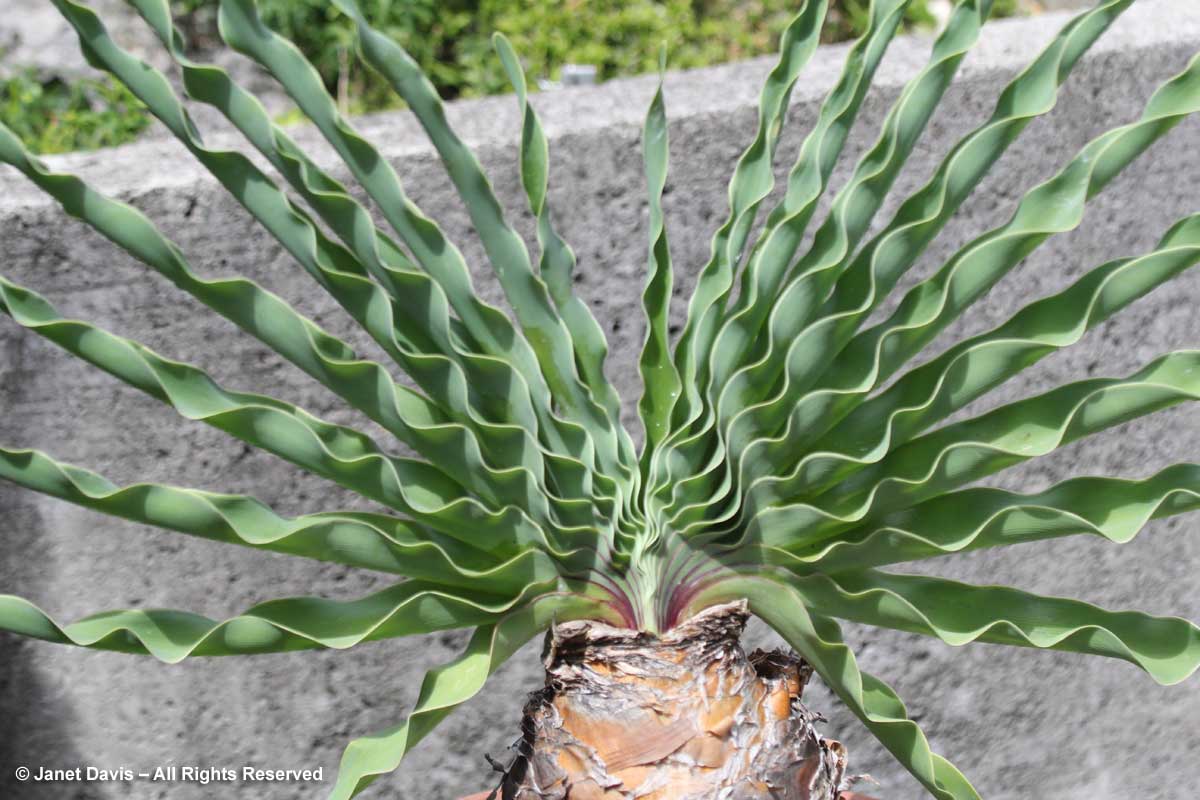 .
.
Behind these is a lovely display of bonsai plants.
Beyond is the Alpine House, which is not open to the public but easily observed through the glass.
Head back out to the path and circle around behind the Alpine House and you’ll come to the Wild Garden.
This is a tough theme to pull off without attracting loads of weeds, but the August display was beautiful – naturalistic, yet reasonably controlled.
I liked the contrast of the staghorn sumac (Rhus typhina) with the bronze colour of the upright spurge (Euphorbia stricta).
One of my favourite spots to spend a little time sitting is the Aquatic Garden. I loved how it had filled out from June….
….to August, when the big lotuses (Nelumbo nucifera) are at their sumptuous best.
Adjacent is the Monocot Garden, with its luscious grasses, lilies and bromeliads, among many other plants.
With a date on Manhattan’s High Line in late afternoon, it was time for me to pick up a lunch at Wave Hill’s lovely restaurant and make my way to the shuttle for the drive to the Riverdale train station. As I looked around at all the spectacular but residential-scale gardens here (there are others besides those I’ve written about), I thought of a sentence from that Horticulture magazine story 29 years ago, Though it described the redesign of the Perennial Flower Garden, it could be applied to all the gardens at Wave Hill: “…its style would be in keeping with Wave Hill’s history as a private estate.” Indeed, this garden is sheer inspiration for those who create modest gardens around their own homes. It is truly a garden for people. But as I walked down the path beside a scrambling maypop vine (Passiflora incarnata) and watched the carpenter bees and honey bees nectaring madly on the August blossoms, I was reminded that it’s also a garden that nourishes and sustains nature’s myriad other creatures.

